EnergyAustralia’s Catherine Tanna on
HOW TO FIX ENERGY
LIGHTS ON, PRICES DOWN
The industry outlook for 2018
THE STATE OF SOLAR
MICROGRIDS


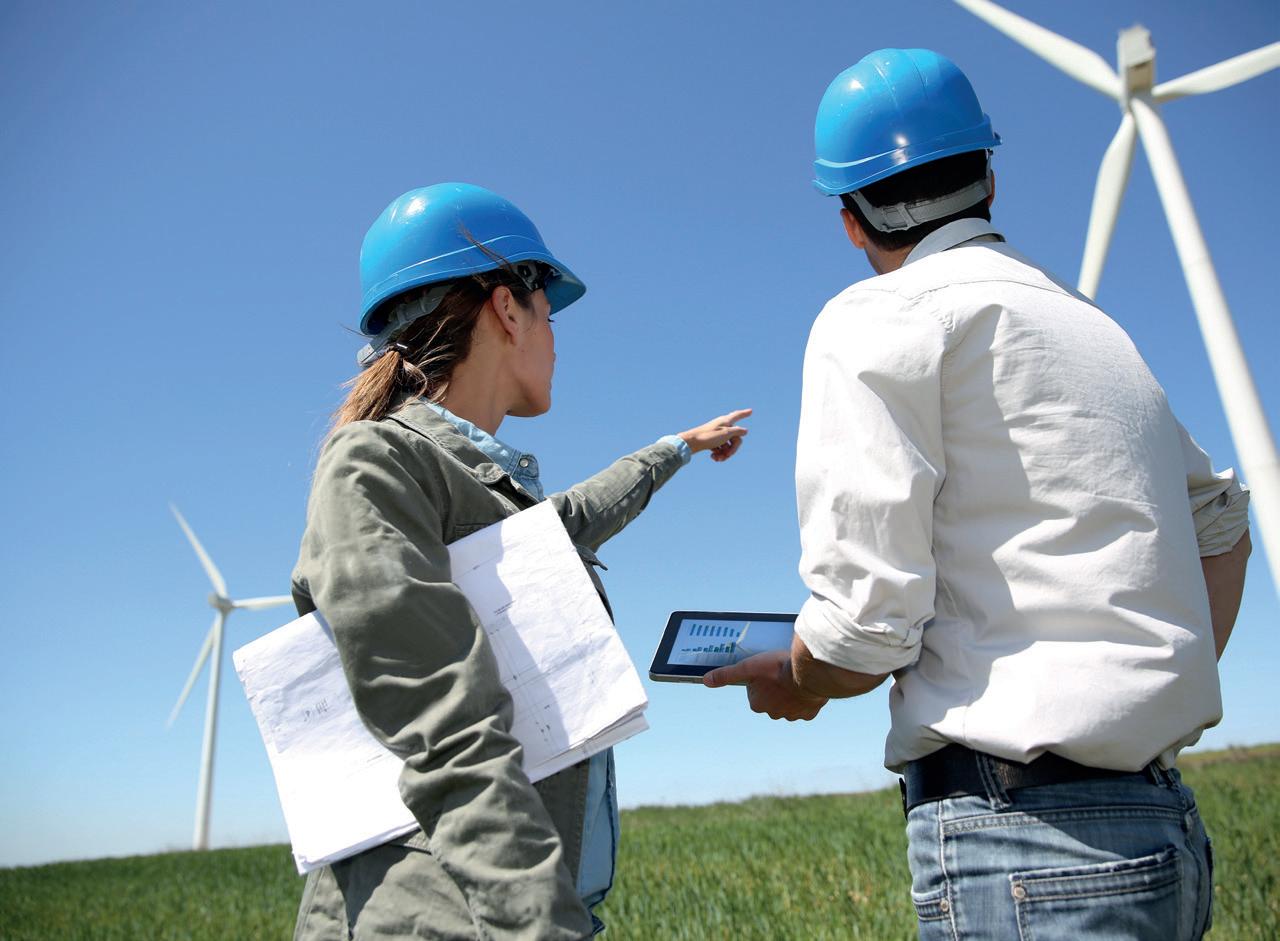

COMMUNITY FOCUSED RENEWABLE ENERGY SERVICES
• Solar Installations/Construction
• Project Management
• Recruitment/Search
• Labour Hire
• Consulting
With Australia currently at the forefront of the global Renewables boom, this has inevitably attracted a significant number of local and offshore investment. As a result, the number of projects under various stages of development is higher than ever before and continues to increase. By all accounts, 2018 will be an excellent year for the Australian Renewable Energy industry.
One of the challenges this creates for both new market entrants as well as established players, is the aggressive competition for the best talent in the market place.
Cranfield Projects boast 15+ years renewable energy industry experience, with the most comprehensive network in the industry. So by partnering with us, you are as good as guaranteeing your success in your renewable energy project execution.
Whether it’s a national Solar PV installation campaign; a utility scale wind / solar farm project recruitment program; or any other recruitment service requirement, contact us today and we will help you pave the path to success.
We currently offer 20% discount for new clients. Contact us today.
operations@cranfieldgroup.com.au



Cover image highlights our feature on Australia's solar industry.
FROM THE PUBLISHER
Welcome to the first edition of Energy magazine. If you’re reading this copy of Issue One you are likely to be working within Australia’s vast energy industry. You’re sure to know the current challenges and issues in the sector surrounding the energy ‘trilemma”- establishing new forms of energy that are reliable, affordable and clean.
You only have to pick up a newspaper or tune into the news to hear stories about how the country is dealing with power supply and prices, while trying to transition to low-carbon energy. With so much discussion already, the question becomes: why create a dedicated magazine to this industry now?

and substations, battery storage, gas, future fuels, electric vehicles, and all that’s in between.
Monkey Media Enterprises
ABN: 36 426 734 954
PO Box 1763
Preston South VIC 3072
P: (03) 9988 4950
F: (03) 8456 6720
monkeymedia.com.au
info@monkeymedia.com.au
energymagazine.com.au
info@energymagazine.com.au
ISSN: 2209-0541
The answer is simple, Energy is made for the industry. We’ll be looking at the policies and politics affecting the sector; but we will always place the emphasis on outcomes rather than political point-scoring. We are committed to helping the industry move forward and looking at how to take advantage of new opportunities and best position yourself in energy’s brave new world.
Energy will help to answer the questions the industry is currently grappling with, including:
» What are the energy sources of the future?
» How do we provide energy that is clean, affordable and reliable?
Jessica Dickers Managing Editor
Laura Harvey Associate Editors
Lauren Cella
Charlotte Pordage Journalists
Elisa Iannunzio
Nicole Valicek
Kirsty Hutton
Marketing Director
Amanda Kennedy
Marketing Associate
Sam Penny
Marketing Assistants
Rima Munafo
Katie Chancellor
Production and Customer Service
Titian Bartlau
Senior Designer
Alejandro Molano
Designer
Jacqui Abela
» How do we give customers what they want?
» How do we contend with disruption in the energy sector?
» How do we digitise our networks safely, securely and efficiently?
We’ll do this by talking to major industry associations representing the sector, as well as energy companies and independent experts. For this first issue, you will read contributions from the Australian Energy Council, Energy Networks Australia, National Energy Resources Australia, Clean Energy Council, CSIRO, the Australian Gas Infrastructure Group, the Energy Pipelines Cooperative Research Centre, Horizon Power, and the Energy Users Association of Australia.
We will also be working with a number of other associations which you can read more about in our upcoming issues. We know how varied the energy industry is, so our aim is to cover everything from solar, wind, hydro power, waste-to-energy, energy networks, microgrids, transformers
In this issue, we take a look at the current state of electricity networks and the solar sector, and delve deeper into how microgrids and demand response is easing pressure on the network and giving power back to the consumer, especially during the hot summer months. We also look at specific solar technologies that are helping to convert the most power from the sun, as well as some of the future fuels that will soon start flowing through Australia’s pipelines.
Our goal is for Energy to not only become the industry’s guide to what is happening in the sector, but the place to go for in-depth analysis of the issues and a look at how you can take advantage of new opportunities.
Energy is published by Monkey Media, the team behind highly-regarded industry publications including Utility, Infrastructure and Pump Industry, and will be a fully integrated platform. In addition to the quarterly print magazine, we also have an established website and weekly newsletter that covers breaking industry news. Head over to www.energymagazine.com.au to explore the online home of the magazine and subscribe to the magazine and enewsletter.
Australia’s energy sector, while often politicised, has a critical impact on the day to day lives of everyone in this country. We want to highlight the work that everyone in the sector does to ensure the lights stay on while also helping to provide some solutions to make sure this continues.
Through our other publication Utility, we’ve seen energy production and reliability continue to become a bigger issue over the last few years and realised there was a strong need for a dedicated platform on which to have these important conversations. While the future of the energy industry looks very different than it has over the last century, we believe it has never looked brighter and are excited for what the industry has in store for 2018 and beyond.
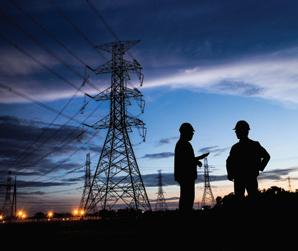



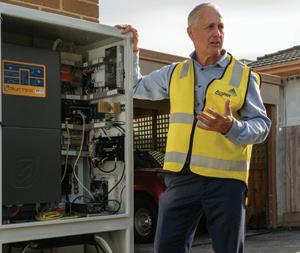



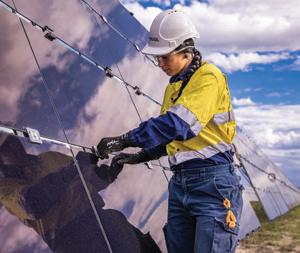

48 Australian solar eclipses previous record
50 Sunny days ahead: emerging solar technologies
54 Speed, power and mobility key to solar success
56 World’s first integrated solar pumped hydro project




62 Future fuels for Australia’s energy supply mix


70 The pathways forward for the energy sector





Managing Director, Horizon Power
Frank has held various executive management roles over the last 27 years in the European, Asian and Australian oil, gas and power industries. Contributing significantly to the energy sector in Australia and overseas, Frank is a board and committee member of the Electricity Networks Association, and a member of the Chamber of Commerce and Industry WA General Council, and Australian Electricity Market Operator Expert Panel.
Chief Executive, National Energy Resources Australia (NERA)
As NERA Chief Executive, Miranda is a strategic leader at the forefront of innovation and collaboration within the Australian energy resources sector. It is a role she is passionate about, bringing together the country’s best minds from technology, research and enterprise, all with the aim of building a more sustainable and efficient energy resources sector. With more than 20 years’ experience in strategic policy, risk management and stakeholder engagement, Miranda has a great understanding of the challenges being faced by the sector - one of the country’s biggest economic contributors and employers. Her interest in transformative and disruptive thinking, coupled with her significant industry experience, ensures NERA plays a vital role in leading the future of the energy resources sector.
Miranda has overseen NERA since its inception in 2016 and prior to appointment as CEO, Miranda was the Director Environment, Safety & Operational Performance for APPEA, Australia’s peak oil and gas representative.

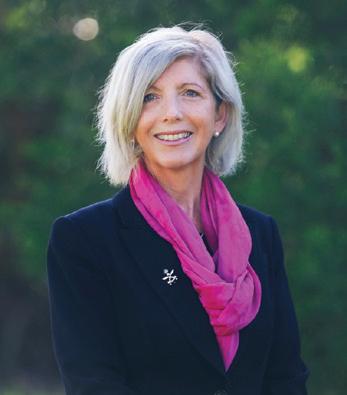
Energy Program Director, Grattan Institute
Tony has been Director of the Energy Program since 2011 after 14 years working at Origin Energy in senior executive roles. From 2009 to 2014 he was also Program Director of Clean Energy Projects at the Clinton Foundation, advising governments in the AsiaPacific region on effective deployment of large-scale, low-emission energy technologies. In 2008, he was seconded to provide an industry perspective to the first Garnaut climate change review.
General Manager Corporate Affairs, Australian Energy Council
Sarah was appointed as the Energy Council’s General Manager of Corporate Affairs in January 2016. Sarah is a corporate and government relations professional with more than 10 years’ experience working with policy and regulatory frameworks across the resources and energy sectors.
Most recently she was Chief of Staff to the then Minister for Industry, the Hon Ian Macfarlane, and prior to that worked as a senior policy adviser to the Prime Minister (energy, resources, environment, agriculture and communications).
Sarah has also worked for the industry - between 2008 and 2013 she worked in AGL’s Corporate Affairs team as Head of Government Affairs (and for some of that time also headed up its Community Engagement team). Sarah began her career as a corporate lawyer, and has a Bachelor of Arts/Law from the University of Melbourne. She also worked as a policy adviser in the Howard Government.


Over the last 28 years Andrew has held a variety of public relations, sales and marketing, and senior management roles in the energy utilities sector. In August 2016, Andrew joined the Energy Users Association of Australia as its Chief Executive Officer. Immediately prior to his current role, Andrew had been with Pacific Hydro for 16 years in the role of Executive Manager, External Affairs where he led a team of professionals who managed media and public relations, corporate marketing, community engagement, reputation enhancement, government affairs and policy development.
In addition to this, Andrew was company spokesperson for over 12 years and had represented the company at numerous state and federal parliamentary inquiries into energy and climate change policy along with significant engagement with industry, government and media stakeholders both in Australia and internationally.
Andrew has been active with various industry associations having been a director and president of the Australian Wind Energy Association, director and deputy chair of the Business Council for Sustainable Energy, and was a founding director of the Clean Energy Council having also played a central role in its formation.
Managing Director, EnergyAustralia
Catherine Tanna is Managing Director of EnergyAustralia, one of the country’s leading energy retailers, providing gas and electricity to more than 2.6 million customer accounts throughout the east coast of Australia.
Catherine is a member of the Board of the Reserve Bank of Australia and a member of the Business Council of Australia. She joined international oil and gas company BG Group in 2009 as Managing Director of its Australian business, QGC Pty Limited, and Executive Vice President for Australia and China. Catherine led the development of Queensland’s first LNG project, one of Australia’s largest capital infrastructure projects at the time. In 2012, she was elevated to the position of Chairman, BG Australia.
Prior to joining BG Group, Catherine had a long career with Shell and BHP Billiton. At Shell, she was Executive Vice President of Shell Gas & Power with responsibility for Shell's LNG, gas transmission and power generation interests across Africa. She held similar roles covering North Asia, Russia, North America and Latin America.


Matt is the Oceania Leader of EY’s Power and Utilities business, and leader of the Global Power and Utilities Transactions business, responsible for the coordination of business strategy to clients in the energy, water, gas and infrastructure industries. This role covers not only the markets of Oceania, but also EY’s TAS Power and Utilities functions in the Americas, Europe, Africa, Asia, Russia and the Middle East.
Andrew Dillon is an experienced energy sector executive, most recently as the General Manager Corporate Affairs at AusNet Services, owners of electricity transmission and both gas and electricity distribution networks in Victoria. Prior to AusNet, Andrew was General Manager Corporate Affairs at Energy Supply Association of Australia, worked in Corporate and Government Affairs at TRUenergy (now Energy Australia) and was a Senior Ministerial Adviser. He is also a Director at Goulburn Valley Water. Over two decades Andrew has worked in many parts of the energy industry as well as in government and consulting. He was appointed the Chief Executive Officer of Energy Networks Australia on 20 November 2017.

NORTHAM SOLAR FARM REACHES NEW MILESTONE
Progress continues on the largest solar project under construction in Western Australia following the completion and execution of the detailed transaction documentation for the Partnership Agreement with co-equity investors Indigenous Business Australia (IBA) and Perth Noongar Foundation (PNF).
The design and construct contract of Carnegie Clean Energy’s 10MW Northam Solar Farm with the Energy Made Clean and Lendlease Joint Venture has also now been executed.
The Northam Solar project has a capital cost of approximately $17 million, which includes Carnegie’s development fee.
Significant progress has already been made with initial engineering works and long lead items ordered. The project is on track to be complete in the second half of 2018 when it will begin selling power into the Western Australian grid.
It is the largest solar project currently under construction in Western Australia and the first ever to be developed on

a “merchant” basis where the power is not contracted under a long-term offtake agreement. Carnegie retains a 50 per cent interest in the solar farm.
The Northam Solar Farm has been developed as a template for future projects where Carnegie receives value from multiple revenue streams, including:
» Electricity sales
» Renewable energy certificate sales
» Reserve capacity credit payments
» Project construction and operating and maintenance
» A project development fee
Carnegie’s Managing Director, Dr Michael Ottaviano, said, “This is an important step forward to formally move the project into
the construction and delivery phase. We look forward to working with IBA, PNF and Lendlease on the delivery of this innovative project.”
Indigenous Business Australia’s Chief Executive Officer, Rajiv Viswanathan, said, “IBA is excited to see this partnership come to life, demonstrating how we can work alongside Indigenous organisations and the private sector to generate positive financial and social returns from new areas of the economy.”
Perth Noongar Foundation’s Chairman, Cedric Jacobs, said, “We are excited about the journey we are on together with Carnegie and IBA. We recognise the tremendous effort and engagement by all parties to date”.
EASTERN POWER BILLS PREDICTED TO DECREASE IN MID-2018
Power bills should start to ease in the eastern states from the second half of 2018 as new generation capacity enters the market.
This is one of the predictions from the Australian Energy Market Commission's (AEMC) annual residential Electricity Price Trends Report. The report forecasts electricity prices across the east coast should fall by between five to seven per cent in the 2018-19 financial year and fall even further in the following year. The report predicts electricity prices will increase in 2018-19 in WA, the ACT and the Northern Territory.
AEMC Chairman, John Pierce, said the report shows wholesale electricity costs are now the single biggest driver of change in residential electricity bills – unlike earlier price trends reports which found network costs were the main driver.
Mr Pierce said prices rose sharply in 2017 by almost 11 on a national basis as
consumers felt the impact of Hazelwood and Northern coal-fired plants retiring, and the lack of replacement investment, combined with high gas prices.
“But we expect these price rises will be reversed over the next two years as around 4,000MW of RET-funded wind and solar generation enters the system," Mr Pierce said.
However, the report also found that over time, low wholesale prices contribute to the closure of coal-fired plants. Without new investment to replace these older generators, wholesale costs will start to increase again as supply falls.
“Without investment in replacement dispatchable capacity, wholesale prices will go up again and remain volatile. And the rollercoaster will be repeated,” Mr Pierce said.
To this end, the AEMC is working with other market bodies on the Energy Security Board on the national energy guarantee design.

CONSTRUCTION BEGINS ON GRANVILLE HARBOUR WIND FARM
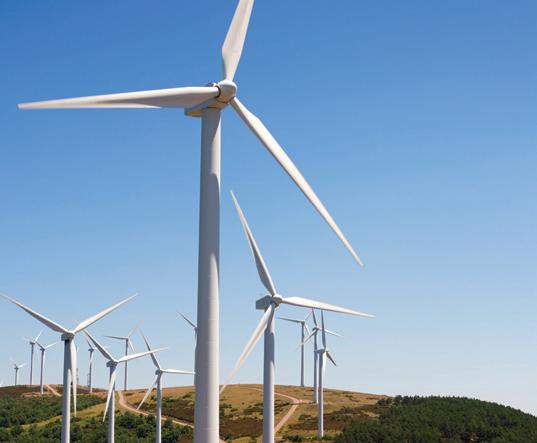
Construction on Tasmania’s $280 million Granville Harbour Wind Farm has begun.
Once completed, the wind farm will have 31 turbines providing 112MW of capacity, enough to power more than 46,000 homes.
Construction comes after Hydro Tasmania announced in 2017 that it reached an in-principle agreement with Westcoast Wind in relation to a power purchase agreement.
In addition to Granville Harbour, construction on Cattle Hill Wind
Farm in the Central Highlands is progressing, and Hydro Tasmania is continuing with its $1 billion ten year upgrade to facilities to increase generation by 250GWh, which is enough additional generation to power over 30,000 Tasmanian homes.
The Granville Harbour Wind Farm will contribute towards plans to double Tasmania’s renewable energy capacity, have 31 turbines and connect to the network at Reece Power Station.
Hydro Tasmania welcomed the official start of construction on the 112MW wind farm on Tasmania’s west coast.
Director of Wholesale Energy Services at Hydro Tasmania, Gerard Flack, said the business will buy about 360GWh of energy and renewable energy certificates per year from the new wind farm.
“The birth of Granville is another sign that Tasmania’s national energy revolution is really taking off,” Mr Flack said.
“We’re delighted to be supporting the Granville Harbour Wind Farm, and helping to make it happen.”
Tasmania currently has about 300MW of on-island wind power capacity, providing almost 10 per cent of Tasmania’s electricity.
The Battery of the Nation initiative, including plans for more interconnection, will open the door for up to 3000MW of Tasmanian wind power.
“Tasmania has huge natural advantages – including an existing hydropower system, exceptional wind resources, elite expertise, and the head-start we’re already taking,” Mr Flack said.
“Pumped hydro energy storage supports and complements wind development. Our work to identify Tasmania’s best possible pumped hydro sites under Battery of the Nation is progressing well."



RECORD INVESTMENT TO HELP MEET AUSTRALIA’S EMISSIONS TARGETS
There will be enough renewable energy projects built over the next three years to meet Australia’s Renewable Energy Target in 2020, according to the Clean Energy Regulator (CER).
The CER has previously said that to meet the Renewable Energy Target approximately 6000MW of capacity would need to be announced and built between 2016 and 2019.
This milestone has been surpassed ahead of schedule following a record level of investment in renewable energy in 2017.
Already, 4924MW of the 6532MW of capacity that has been firmly announced is under construction or already operating, with the balance expected to be fully financed and under construction in early 2018.
More than 1600MW of projects have a power purchase agreement in place which are expected to reach financial close.
According to the CER, the construction of this level of firmly announced renewable projects will lead to an investment of more than $12 billion which will support growth in the Australian economy.
Queensland has the largest share of this new build with more
than 2000MW of capacity, followed by Victoria with around 1600MW and New South Wales with 1400MW.
One of the major shifts in the market, is the huge increase in share of large-scale solar.
In the first 6000MW committed under the scheme, solar contributed only four per cent of the total. In the firmly announced projects since 2016, solar now makes up 46 per cent.
This will ensure significant additional electricity supply is available in the market well ahead of 2020.
As outlined in the Australian Energy Market Commission’s 2017 Residential Electricity Price Trends Report released in December 2017, this extra supply is expected to apply downward pressure on wholesale electricity prices over the next three years.
2018 should see around 2600MW of new renewables projects commence operating which will further strengthen reliability and reduce emissions in addition to reducing electricity prices.
This additional supply is expected to lead to a reduction in large-scale generation certificate spot prices.
These certificates are purchased by liable entities, mostly electricity retailers, to meet their renewable energy target obligations.
SMART INNOVATION, BUILT FOR THE FUTURE
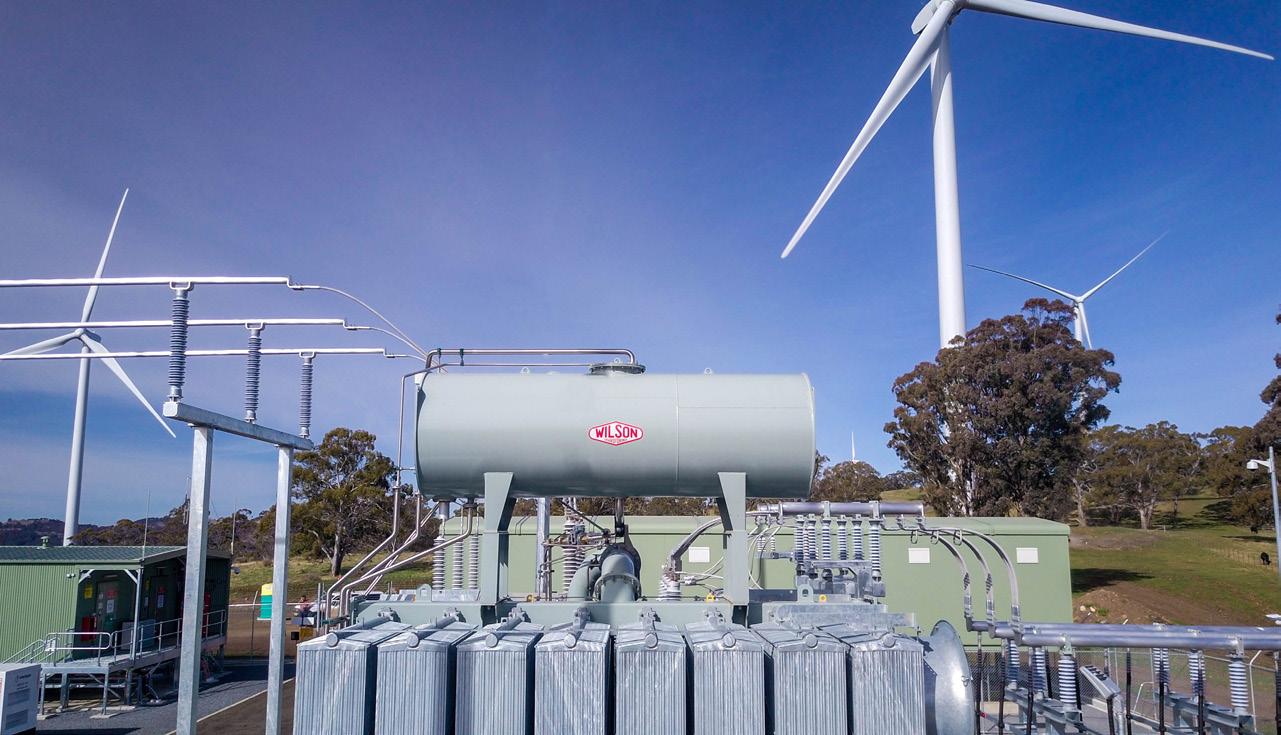
WILSON TRANSFORMER COMPANY has a successful history of providing transformer solutions for the renewable sector, including wind farms, solar applications and hydro power stations.
We have designed and manufactured transformers to suit both Medium Voltage (MV) and High Voltage (HV) substation applications. Our transformer designs are optimised according to parameters such as generation profile, feed in tariff, distribution voltage, corrosive environment, wind profile, project design life, expected revenue per kWh and cost of capital.
Power Transformers
Distribution Transformers
Compact MV Substations
Open Skid Solar Substations
Special Transformers

Fault Current Limiters
Special Applications
Monitoring & Control Solutions

WA GAS PIPELINE RECEIVES FINAL APPROVAL
APA Group has received final approval from the Western Australian Department of Mines, Industry Regulation and Safety for the construction of the 198km Yamarna Gas Pipeline (YGP).
Civil and construction work, and installation of the generators and gas engines has also begun at the 45MW Gruyere Power Station, which will be connected to the YGP.
APA will design, build, own and operate the pipeline and the 45MW gas-fired power station, at a total construction cost of around $180 million.
APA has subsequently appointed Nacap Australia as the construction contractor for the pipeline.
Nacap has begun establishing a temporary 200-person construction camp along the pipeline route and will mobilise its workforce to site to begin works in February 2018.
The Gruyere Gold Project is a 50:50 Joint Venture between Gold Road Resources and Gold Fields (Gruyere JV), and is located in the Yamarna greenstone belt of Western Australia, 200km northeast of Laverton and to the north of APA’s Eastern Goldfields Pipeline.
A 15-year transportation agreement has been entered into with the Gruyere JV to deliver the necessary energy for the project.
Gas will be transported almost 1,500km to the site using four of APA’s interconnected gas pipelines: Goldfields Gas Pipeline, Murrin Murrin Lateral, Eastern Goldfields Pipeline and the Yamarna Gas Pipeline.
Commissioning of both pipeline and power station is expected to be in late 2018, to align with the Gruyere JV’s expectation of first gold scheduled for early 2019.
Construction is expected to be complete by the June 2018 quarter.


»
Power Systems Australia (EPSA), Australia’s only authorised Cat® engine dealer with seamless support provided by Cat®service
FUTURE ENERGY POLICY IS BEING SET IN 2018
BE INSPIRED BY THE OPPORTUNITIES THAT A TRANSFORMATION ACROSS THE NEM CAN BRING AND COLLABORATE WITH LIKE-MINDED BUSINESSES



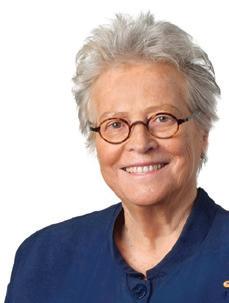
JOIN US FOR 2 DAYS OF INFORMATIVE & INSIGHTFUL DISCUSSIONS INCLUDING A ROUNDTABLE WITH THE REGULATORS, FEATURING AUDREY ZIBELMAN, AEMO; JOHN PIERCE, AEMC; JIM COX, AER; AND DR KERRY SCHOTT, ENERGY SECURITY BOARD.
REGISTER NOW AT EUAA.COM.AU
A SUSTAINABLE APPROACH TO TEMPORARY SITE POWER

TIn a move toward sustainability, Federal and State Governments are adopting the Infrastructure Sustainability Council of Australia’s (ISCA) sustainability rating system for all major construction projects. Now the need for sustainable power generation on project sites is high, with innovative green products not only helping to achieve sustainable practices, but are now also important in securing tenders.
he IS rating scheme provides a consistent approach to infrastructure sustainability, enabling smarter solutions that reduce risks and costs, and promote resource efficiency. ISCA plans to launch IS rating v2.0 in 2018, introducing new categories that will consider sustainability through the lens of economics, workforce, resilience and green infrastructure.
One of the high value components in the rating scheme is temporary site power and lighting during a projects construction. Typically, traditional diesel generators can create 2.65kg of CO2 for every litre of fuel consumed.
Generator hire company Green Power Solutions (GPS) offers various solutions that can help the construction industry achieve sustainability by balancing power efficiency and environmental impact against risk and cost reduction.
Sustainable and renewable temporary power generation
One solution is GPS’ biodiesel powered mobile generator. Burning biodiesel emits no sulphur dioxide and CO2 is absorbed
in the growing cycle of the organic matter that produces biofuels, giving biodiesel a zero carbon footprint. This is in line with the Federal Government's long-term target of net-zero emissions by 2050. GPS’ biodiesel biofuels meet Australian and international standards using 100 per cent ethical feedstocks.
GPS has also incorporated a hybrid generator solution for temporary power supply covering various sized sources. The hybrid generator combines diesel generation with two or more renewable energy sources to increase system efficiency and further reduce costly diesel consumption.
Managing Director at GPS, Danny Williams, said, “We can help boost the IS rating with the unique advantages of our products, including that it costs you less in the long term.
“With over 30 years experience in diesel powered generators, generator rental and biofuels, our products are tailored for optimised efficiency and increased reliability.”
For more information, visit www.greenpowersolutions.com.au.
NEW WASTE-TO-ENERGY FACILITY IN THE WORKS
Phoenix Energy will start preliminary groundwork on Australia’s first waste-to-energy facility in Kwinana, WA, in early 2018.
Phoenix Energy and project co-sponsor Macquarie Capital have entered into exclusive negotiations with a consortium to design, construct and operate the facility — which will start commissioning in the fourth quarter of 2020 and is expected to be fully operational in the second quarter of 2021.
The consortium includes Spanish infrastructure and renewable energy company Acciona, and waste management and energy services company Veolia.
The facility is the only waste-to-energy source to be appointed to the Preferred Supplier Panel for Sustainable Energy Generation, that is operated by the WA Local Government Association (WALGA).
Councils are now able to purchase the baseload renewable energy that is generated from their own specific municipal waste, ensuring that their power is being sourced renewably from waste created in their community.

Eight Local Government Authorities have long-term contracts in place to utilise the residential (post-recycling) rubbish from their area to generate baseload renewable energy.
The appointment of Kwinana Waste-toEnergy as a preferred supplier means that
other councils can also supply their waste under the WALGA process and purchase the power back.
Set to be the first of its kind in Australia, the facility will be able to process 400,000 tonnes of waste a year and will generate about 40MW of energy.
STORING ENERGY FOR A SUSTAINABLE FUTURE
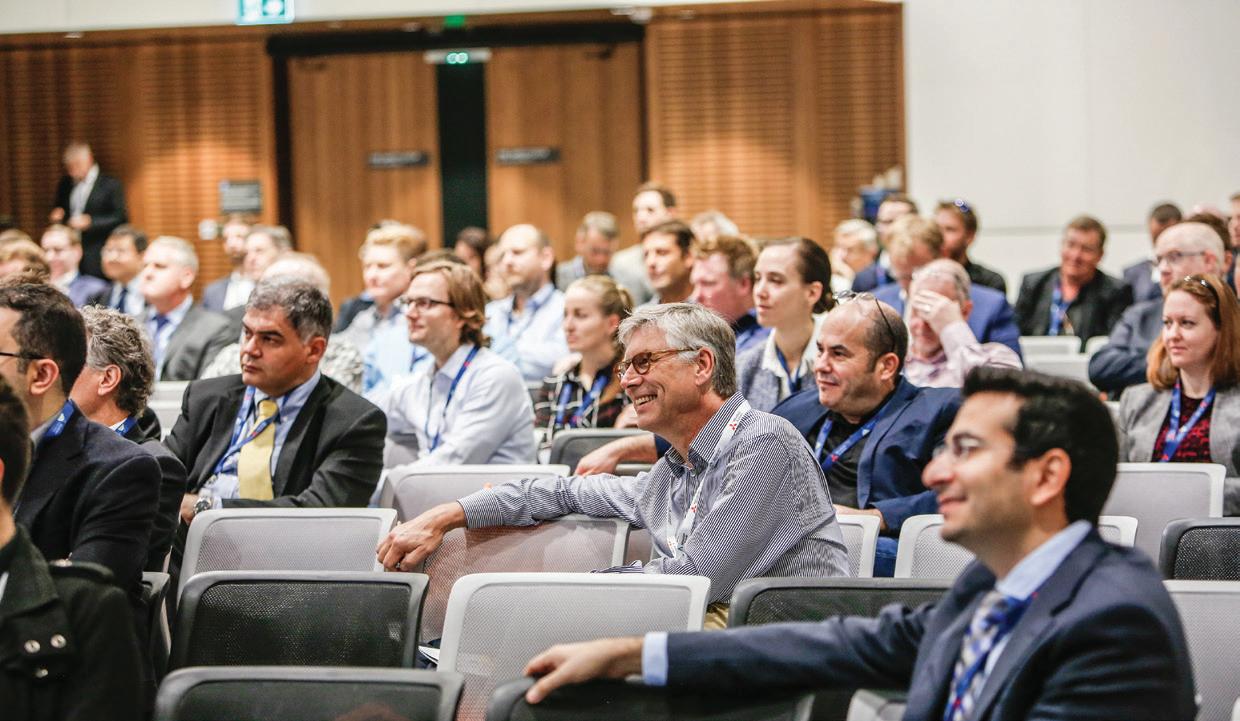
Australia’s peak industry event for energy storage, the fifth annual Australian Energy Storage Conference and Exhibition (AES 2018), is coming to Adelaide from 23-24 May 2018.
As Australia transitions to a low carbon future, energy storage has been brought to the forefront of industry conversation. While the implementation of battery storage is increasing, the energy storage umbrella covers many applications and technologies, from pumped hydro to thermal.
These technologies are important, but the focus should be on overall sustainability - environmental and business - and finding the right solution for each situation.
With South Australia arguably the country’s leaders in clean-energy and sustainability, it’s a fitting location for AES 2018, which will see presentations from industry experts, and exhibits from leading companies that are implementing energy storage solutions at the residential, commercial and grid levels.
With a theme of ‘Storing Energy for a Sustainable Future’, the event will explore the huge potential of emerging energy storage, focus on the technologies that will support this transition, and give delegates the chance to lean more about South Australia’s leadership in this fast growing sector.
Renewable energy leaders
The exhibition will be host to industry leading companies, including Tesla, Redflow, Toshiba, Kokam, ANT Solutions and many more, giving attendees
an opportunity to hear about new products and technologies in the energy storage space.
The conference will also feature a keynote presentation from Chairman of GFG Alliance and majority shareholder of SIMEC Zen Energy, Sanjeev Gupta, who has become a major player in South Australia’s energy market. Recently the SA Government contracted SIMEC Zen Energy to help move the state towards a 100 per cent renewable energy target.
Get up close and personal on a site tour
AES 2018 will showcase energy storage integration in energy networks across Australia through a series of comprehensive workshops, an “Ask the Expert” industry session, a comprehensive social program, as well as a new look exhibition floor.
This year will also feature site tours from selected commercial and utility energy storage companies around Adelaide, allowing conference delegates an in depth look at innovative technology and installation, and how to overcome barriers in their deployment. Attendees can talk directly with site owners and technology providers, with the tours running on Tuesday 22 May and open only to conference delegates. Site tours will include Hornsdale Wind Farm, Adelaide HS and Tonsley, and Redflow.
Don’t miss the chance to meet and connect with key decision-makers and be at the heart of the energy storage revolution.
The Australian Energy Storage Conference and Exhibition 2018 will run from 23-24 May at the Adelaide Convention Centre. To register, visit www.australianenergystorage.com.au.



In 1957, CBI Electric invented the highly sensitive residual current device (RCD), which eventually resulted in South Africa being the first country in the world to make the use of RCD’s mandatory.
The development of circuit breakers, from miniature to molded case circuit breakers, utilises Hydraulic Magnetic technology. All of the circuit breakers CBI Electric manufactures employ the Hydraulic Magnetic principle of operation. This technology boasts two distinct properties; one is the accurate tripping characteristics, and the other is that it is independent of ambient temperature variations.
CBI Electric, perhaps better known in Australia as Heinemann Electric, has a long history that dates back to the 1950’s and early 1960’s, and is known for its SF range of products that have been entrenched in Australian mining, rail, industrial and commercial applications.
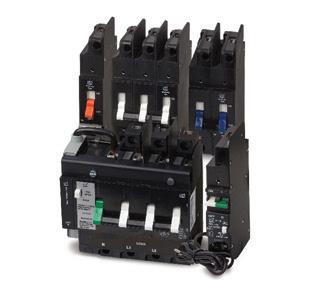
POSSIBLY THE COOLEST CIRCUIT BREAKER ON THE MARKET
CBI circuit breakers utilise Hydraulic Magnetic technology which always carry 100% of rated current with the trip point unaffected by changes in ambient temperatures.
CBI Electric has products to suit mining, commercial, rail, industrial, solar, telecommunications, and automation, as well as the unique CBE range for OEM equipment.
The CBE range
The CBE range boasts a wide selection of circuit breakers for equipment in the B, C and DD FRAME, and also includes the 13mm narrow profile QY and QDC ranges available for AC and DC applications. These products can be customised to a customer's needs and individual specifications, assuming the specification is covered by the relevant standard. The full range and technical data sheets are available at www.cbi-electric.com.au.

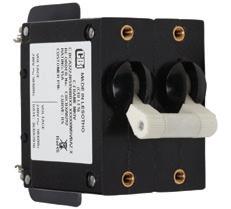


Lack of space?
Try Q Range 13mm circuit breakers
Due to the fact that the modular width is 13mm instead of the traditional 18mm, you will realise a space saving of more than 30 per cent in the same cabinet size. This is ideal if you are going to upgrade existing equipment, equally so if you would like to fully optimise and reduce the dimensions on a new design.
More compact dimensions are often associated with higher temperatures, but as the Q-Range is hydraulic magnetic and thus unaffected by ambient temperature, it allows for the 13mm profile and will always hold rated current. Specially adapted busbars with 13mm modular width, are available in various configurations.
The new 300V, 400V and 600V DC Y frame breakers
CBE has recently released the Y frame, which is also available in the 13mm profile for telecommunication DC applications. This utilises the Hydraulic Magnetic technology and takes advantage of the 30 per cent space saving as per the Q Range.


Solar battery storage for off grid, residential and commercial applications
Utilising its Hydraulic Magnetic technology, CBI Electric has released a range of circuit breakers for the battery storage market which include the standalone breakers from 80A -250A 80V DC, as well as the complete enclosure which houses two breakers to safely protect and isolate battery strings from 80A to 250A.
With the use of Hydraulic Magnetic you are guaranteed to have no effect on the breakers from ambient temperatures, and when fitted into a MCB shell up to 250Amps the customer can save space and enjoy the ease of switching against fuses and MCCBs.
The 250A MCBs are a four-pole unit which come fitted with busbars to achieve the 250A rating and allow for up to three cables to be fitted to the bars. 80A and 100AMP are two-pole units, the 125A and 150A are three-pole units, and the 200A is a four-pole unit. The 250A unit uses a unique 19mm design per pole with the 80A -200A utilising the unique 13mm design per pole.




The Remote Actuation Unit (RAU) is a factory fitted module that enables the automated switching of DD-frame circuit breakers. The unit can actuate the circuit breakers both ON and OFF.
The actuation of the circuit breaker pole occurs completely internally. The RAU unit is mounted on the left hand side of the circuit breakers and can be connected to up to a three-pole unit.
The RAU connects to circuit breakers with a standard toggle. The circuit breakers can be manually operated when in the REMOTE mode. Two indicators are present on the front face of the RAU unit. The first is an LED that provides an indication of the mode of operation as well as showing the unit’s operational status.
The second is a colour flag indication which highlights the position of the latching mechanism of the connected circuit breakers. The unit has a select switch, providing the ability to specify the operation mode - remote or manual. A signal output provides feedback to the user that there is power on the load side of the circuit breakers.
The unit comes with a universally standard connection terminal. For DC circuits up to 300A, and AC circuits up to 100A, the RAU has a operating voltage range of 15Vdc to 80Vdc. Applications include battery storage, telecommunications, railways, solar and system automation.
CBI can design this product to your needs, whether it be three individual circuits at different current ratings or up to the full capacity using three bridged breakers. These are available in one, two and three-pole configurations.
POLYBOX Polyethylene Enclosures
These are enclosures that can withstand the harshest conditions, and come in a range of sizes and designs, including wall mount, pole mount and floor standing pillars. The range features IP54 enclosures that are heat resistant; have a 15 per cent reduction in heat than conventional enclosures to protect sensitive equipment; are acid resistant; fire retardant; won’t attract lightning strikes; are approximately 30 per cent lighter than standard metal enclosures; and can be recycled up to five times.

CBI’s in-house design and assembly has, to date, completed projects using Polybox enclosures for utilities, solar installations, and commercial and industrial projects including temp boards specifically designed and manufactured for Sydney tunnel projects.
Pole top boxes for utilities allow visible indication of phase fault - this can be

seen from ground level and can be easily switched back to the on position once the fault is cleared.
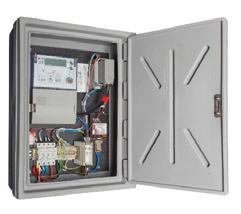
Pole mounted power quality application for utilities.

Distribution pillars feature a unique anti gravity three point slam lock for added security and are approximately 50 per cent lighter than conventional pillars.

POLICY

 by Sarah McNamara, General Manager Corporate Affairs, Australian Energy Council
by Sarah McNamara, General Manager Corporate Affairs, Australian Energy Council
CERTAINTY
CRITICAL ISSUE

The beginning of 2018 has focused on whether the National Electricity Market can withstand the demands of summer. This would have been unheard of not that long ago, but the state wide blackout that occurred in South Australia in September 2016 and subsequent supply issues elsewhere last summer have made reliability of supply a “front and centre” issue.

For this summer, the Australian Energy Market Operator (AEMO) committed funding to arrange additional reserve supply under its Reliability and Emergency Reserve Trader (RERT) powers. In a late January heatwave, AEMO prepared some of this reserve plant to operate, but while conditions were tight, it didn’t need to be called on.
This did not prevent finger pointing about the lack of wind generation when required in hot conditions, or questions being raised about the reliability of coal and gas-fired plants in the heatwaves.
So the year started as 2017 finished, in an ideological debate about the best way forward and the merits of different forms of generation, the nature of policy risk, climate change and how much life is left in old power stations.
Recent plant closures
All forms of generation have their challenges at times of high temperatures and peak demand. The biggest difference at the moment is the lower dispatchable reserve margin available in the market, due to the closure of plants like Hazelwood in Victoria and Northern in South Australia. They were the most recent of 10 coalfired generators that have left the National Electricity Market since 2012, taking more than 5,000MW of firm, dispatchable capacity with them. The retirement of another 15,0000MW is likely to occur over the next 15-20 years. Retiring power plants at this rate without replacement creates supply-demand imbalances.
The plants that have closed have not been replaced with likefor-like generators. Since 2012 we have seen more than 3500MW of large-scale renewables and another 3400MW of rooftop solar introduced with support from the Renewable Energy Target, as well as various state-based support schemes. But this new variable renewable energy generation is not the same as new dispatchable capacity.
At a practical level it means the level of back-up generation is thinner and so trips on individual units during high demand are now likely to be more significant and noticeable.
The increase of reliability risks is the reason why the recently formed Energy Security Board has recommended a reliability guarantee obligation as part of the proposed National Energy Guarantee (NEG), which is currently before the Council of Australian Governments’ (COAG) Energy Council.
Policy certainty needed
The solution to energy policy in Australia hasn’t changed in a decade. At a strategic level, and from the industry’s perspective, it isn’t overly complicated. Australia needs policy certainty to foster adequate investment and thereby provide access to energy resources. Once that is in place, the market will make the necessary investments in response to market incentives which will restore confidence in electricity reliability.
The design of the future grid will be shaped by things such as the cost of technologies like renewables and storage, the price of gas, the ability of technologies like lower emissions coal to

get cheaper and cleaner, the evolution of distributed energy like solar, and the way consumers are encouraged and incentivised to handle their demand.
It is the reason why bipartisan agreement on national energy and climate policy is critical and is being urged by the energy industry and business more broadly.
Resolution of energy policy will remain challenging in 2018, particularly when you take a look at the political calendar for the year. There will be three state elections – South Australia and Tasmania in March and Victoria in November. A conventional (ie not a double dissolution) federal election is possible from 4 August 2018. In all three states, energy policy and developments will be an important focus and part of the political debate. The Labor governments in SA and Victoria are committed to continuing to develop renewable generation and battery storage.
The stakes are high
Further south, energy has not been far away from the headlines in Tasmania because of the “energy crisis” it went through in 2016 with the loss of the Basslink interconnector and low dam levels, and debate over the retention of the Tamar Valley gas-fired plant. More recently, discussion of the state becoming the “battery of the nation” as well as a jointly funded Federal and State Government feasibility study into a second Basslink interconnector are underway.
So the energy stakes continue to be high. The NEG is a considered and welcome proposal which
addresses all three elements of the so-called energy policy trilemma - reliability, cost and emission reductions.
The two arms of the NEG are a reliability guarantee to ensure energy is always available, and an emissions guarantee to enable the energy industry to meet its share of Australia’s commitments on greenhouse gas emission reductions. The reliability guarantee is planned to become effective by the end of 2019 with the emissions guarantee to come into effect in 2020. Compliance with the guarantees will be the responsibility of electricity retailers.
A detailed design consultation will begin shortly to assess how best to implement the NEG with as little impact to market participants as possible, and avoiding unintended or unforeseen consequences.
The Energy Security Board is well placed to run this consultation and stakeholders are cautiously optimistic that a workable NEG can be the outcome. It is critical that this consultation does involve all of the industry, including large and small players, in order to develop the right set of market mechanisms to bring the NEG to life. Support for, and participation in, this consultation with the Energy Security Board will be the key task of 2018 for the Australian Energy Council, and the industry as a whole.
The success of the NEG will be measured by whether it can achieve the necessary bipartisanship and COAG endorsement to enable it to become a durable policy on which industry can rely, and investment can occur. Without that support, policy instability will continue and the industry will struggle with the kind of investment uncertainty that has occurred over the past decade.

HAVE CONFIDENCE – WE CAN FIX ENERGY
by Catherine Tanna, Managing Director, EnergyAustralia
There’s a well-known joke about a tourist in the Australian outback who asks a local for directions to Sydney. The local, a farmer leaning on a fence post, thinks for a while, then replies: “Well, if I were you I wouldn’t start from here…” That’s energy. If we wanted to build a modern, efficient energy system in Australia, we wouldn’t start from where we are right now, either.

It seems like the situation has come on us with little warning. It’s more shocking because for the past two decades energy supply has been reliable and prices have been steady –even falling.
But energy is vital to the health and wellbeing of all Australians. So, we have to fix it.
And, I believe we will fix it.
First, we need to agree what success looks like.
To a normal person, with far better things to do with their lives, energy must be desperately difficult to make sense of. In their eyes it must seem politicians, electricity and gas retailers, generators, green groups and consumer organisations are pulling in different directions.
In 2017, we had more than a dozen examples of governments directly intervening in energy markets.
On the surface, action on international gas contracts, compulsory arbitration in pipeline disputes and the removal of rights of appeal for poles and wires networks all seem good for retailers and for customers.
Perversely though, these polices add risk, which discourages investment. You can make the case that, in hindsight, many of these interventions were less about providing policy certainty, and more about finding an immediate solution to a political problem.
It hasn’t been all bad, though. We welcomed moves by the Federal Government to make power bills and offers more transparent. We will always support measures which make energy easier to understand, so customers can get a deal that’s right for them.
But what’s next? Snowy 2.0, more coal-fired power stations backed by government, using taxpayers’ money to fix a problem the private sector is willing to solve? These assets aren’t cheap and tie up capital for decades.
In a competitive market, government and industry share responsibility for energy. Right now, the politics are making it very hard for good politicians to do the right thing.
So, we are where we are. What do we do about it?
I think success means delivering affordable, reliable and cleaner supplies of energy for everyone in Australia, no matter what they earn or where they live.
When we prioritise one of those things over another, we get the situation we have now: high power prices and, in some states, the lights going out.
The answer is simpler than you might think. It’s this: confidence, in fact, restoring the confidence of the private sector to make the long-term investments needed.
Don’t mistake simple for easy, though.
Yes, the National Energy Market needs tweaking, but not an overhaul.
Attracting investment in new generation is critical to restoring the vitality of the NEM. If we’re to do that, there is no substitute for stable, bipartisan energy policy, one that provides transparency in generation markets and sets a long-term trajectory for carbon emissions.
That kind of policy is integral to giving business the confidence to invest, whether that’s backing new, cleaner generation to replace coal or entering long-term energy contracts.
Confidence fixes most things.
Yes, a mechanism for pricing carbon will impose cost for industry. So why would the three largest energy retailers advocate for such a thing?
Because of the certainty it provides. The knowledge that the rules won’t change as governments change is far more valuable. We’re already working hard to ease the pressure on families and businesses from power prices:
» We’re continuing to invest in the reliability and efficiency of our big power stations at Yallourn and Mt Piper, so they’re there when needed. These plants are giving us time to make an orderly transition to cleaner sources of generation.
» We’ve committed an additional $1.5 billion to supporting the development of new wind and solar projects in eastern Australia, representing 500MW of additional capacity.
» We’ve brought to market the next generation Redback Smart Hybrid System; this new technology combines a solar inverter, battery enclosure and intelligent energy management software into one package. The Redback system was specifically created to put families and businesses in control of their energy consumption.
» We’ve established partnerships with the Sydney Opera House and Melbourne Cricket Ground to help these remarkable icons use energy more sustainably, in ways which one day may be applied in homes around the country.
» We’re investigating $1 billion of potential new gas-fired generation, a $480 million pumped hydro project in South Australia and a $160 million energy recovery project in New South Wales, all of which could provide new supplies and stability to the grid.
» We’ve started an exciting trial with the Australian Renewable Energy Agency and the Australian Energy Market Operator aimed at securing 50MW of demand response reserve capacity in New South Wales, Victoria and South Australia.
» We’re investing an additional $10 million in our national hardship program which provides financial and other support to people in need.
» We’ve launched a new rate-fix product, Secure Saver, that allows households to avoid rises in energy tariffs for the next two years, while we work to ease the pressure on power prices.
That’s just a fraction of the things we’ve done and what we’re doing. Of course, there is much more to do.
But imagine what we could achieve with the confidence that comes from stable policy, with knowing that a major investment today won’t be rendered obsolete tomorrow.
EnergyAustralia doesn’t have all the answers – we can only deliver reliable, affordable and cleaner energy for all as part of a much broader response, one that involves all parts of industry and governments working together.
The National Energy Guarantee is a serious proposal to address reliability and emissions reductions. We hope it can lead to agreement between State and Federal Governments on a national approach that reduces duplication and unnecessary cost for customers.
It’s an opportunity for our politicians to do the right thing for families and small business across the country.
Rarely, if ever, has there been so much attention on energy. And rightly so, because of the good it does for our community.
It’s precisely the right time for this brand-new publication Energy to harness the focus on the sector and lead the way forward. I wish you all the best and look forward to future editions, when we can say energy has been fixed.
People are looking to us to get it right.

WHAT THE ENERGY RESOURCES SECTOR CAN LEARN FROM A
famous fairy tale
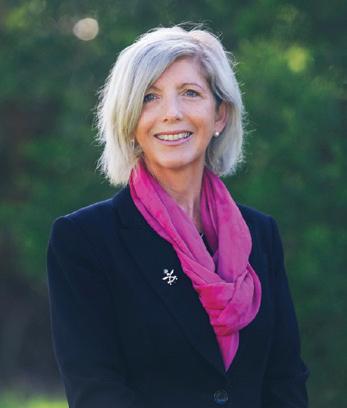
In the fast changing technological and digital world we live in today, exploration and creativity are going to be skills as essential to society as STEM (science, technology, engineering and maths).
My holiday reading this Australian summer included a brilliant Chinese science fiction novel. Death’s End (part three of The Three-Body Problem by Liu Cixin), is a novel on a grand scale. Liu brilliantly deploys hard science and the law of physics to ground the novel and convey a sense of measured reality, whilst simultaneously taking us on a huge leap of imagination to explore the scale of the universe and the consequences of our human choices. As one commentator observed, “At its core, science fiction capitalises on uncertainty about the future to push the boundaries of the reader’s imagination.”
Death’s End got me thinking about two things. The first is the potential power of stories to convey important messages - if done well and wisely - and the second is the complex interaction of consequences from developing, finding, choosing and applying science and technology solutions.
by Miranda Taylor, Chief Executive, National Energy Resources Australia (NERA)With digitalisation, new technologies and new energy sources all disrupting the industry, energy resource companies are looking to create new growth areas and innovate current business models. But how does this relate to fairy tales?
Miranda Taylor from NERA explores how the choices and collective actions of industry could take advice from the creative world.
Solutions causing more problems
This was given a somewhat humorous twist for me by a social media post by The Economist that I spotted on Twitter; “plastic-eating caterpillars could save the planet”. In turn, I was quickly reminded of the famous children’s rhyme, ‘There was an old lady who swallowed a fly'.
The old woman eats increasingly large animals to deal with the problems introduced by eating the previous animal i.e. a spider to eat the fly, a bird to eat the spider and so on. The rhyming tale is silly and fun, and children love this, but like many fairy tales it has a dark side - the old lady ultimately dies.
A clear message would be that solutions can beget different and far worse problems. I won’t comment here on the plastic-eating caterpillars, except to say that the introduction of plastics technology dealt with some serious previous problems and introduced new ones.
In a recent article in The Australian, Bjorn Lomborg, Director of the Copenhagen Consensus Centre stated in regards to climate change:
“…goodwill isn’t enough to stop climate change, and history is littered with well-meaning policies that turned out to be unhelpful or even worse than the problems they were meant to address.”
He cited a historical example, Mao Tse-Tung’s ‘Four Pests’ campaign – an attempt to improve crop yields and tackle serious health issues in China through the

eradication of pests, one being sparrows. Infectious diseases such as tuberculosis, plague, cholera, polio, malaria, smallpox and hookworm were endemic in late 1940s China, and at a time of huge political and social transition urgent solutions were needed.
The campaign was a success – the whole population was rallied to enact it - but that very success was also an unmitigated disaster for the Chinese people. With no sparrows to eat them, the population of other pests such as locusts ballooned, crops failed and contributed to a famine, and it is estimated that around 30 million lives were lost. Novel agricultural techniques implemented through the Great Leap Forward further contributed to the disastrous effects of the campaign.
Creating connections for growth
So, what does this all mean for the energy resources sector and Australia broadly?
One thing we can be 100 per cent sure about as 2018 speeds up, is that the convergence of technologies and innovative business models, and the rapid development of new energy sources and electrification, will disrupt industries, economies and society.
But - and it is a huge but - we must make informed, strategic choices, understand the consequences (intended and unintended) of those choices when combined, and take action collectively. Without doing this, we

create the potential to create our own sector’s version of China’s 'Four Pests' campaign.
Over the next five years, energy resource companies will be working to drive productivity improvements and optimise existing assets, develop and access talent and knowledge to adapt digital and automation technologies, and create new value and growth areas and innovative business models. At the same time, those companies need to look forward to a decarbonised economy, anticipate technology disruptions and diversify.
Working together we can tackle big challenges and successfully transition Australia into a fair, smart, high value, digital, export-focused economy, and the energy resources will be well placed to provide Australia with reliable, secure, cost-effective and decarbonised energy for decades to come, while simultaneously growing a strong domestic industry of technology and service providers, and generating future focused jobs.
NERA will continue to work with industry to create connections for growth and help unlock new commercial opportunities through collaboration between industry, SMEs, supply chains, entrepreneurs, investors, and the scientific and research community.
Digitising the sector
Our focus this year will be to support the increasing digitalisation and automation of the energy resources sector, informed by the growing role of sensors, data, machine learning and AI to provide insights and inform action.
We will also be working to deepen the connections between the research sector, particularly PhD students, with innovative SMEs to develop and commercialise digital technology in partnership with larger supply chain companies and contractors, and miners/ operators.
A key action will be to support the researchers and end users to come together with innovative SMEs to co-create and commercialise solutions – with the start-up and SME sector most able to be agile and innovative.
NERA welcomes you all to 2018, and may we not eat a spider if we should swallow a fly without rigorously framing the problem first.

AUSTRALIA’S FUTURE ELECTRICITY SYSTEM

For most of Australia’s history, electricity has come from big power sources. Up until around a decade ago, a power station was typically a huge coal-fired steam turbine plant that took many hours to turn on or off. And until very recently, we had almost no way to store most of this power. All around the world, this is now changing.
We are moving into a world of distributed electricity, flowing from multiple sources rather than a few giant structures. US research firm Navigant, borrowing a term from online technology, has talked of an ‘energy cloud’ made up of millions of small suppliers. It’s a world in which most consumers will have much wider energy choices.
New technology falls in price
Thanks to a fall in prices over the past decade, solar photovoltaic cells have become a viable way to generate electricity, says Stuart Allott, AEMO’s group manager of communications and corporate affairs.
While companies have been creating large solar farms to produce electricity, households have been creating another major source of solar power; solar arrays on the roofs of their homes. Wind power too has come down in price, as companies learn how to make more efficient wind generators.
Electricity storage becomes affordable
Electricity experts of three decades ago noted that electricity could not be effectively stored. But new battery technology originally developed for laptops and phones has changed that. Efficient, affordable battery storage makes solar and wind power far more useful, allowing power from these sources to be stored and fed back into the grid when needed. They effectively become an additional power source for the whole national system. Tesla, known more as an electric car manufacturer, made headlines last year regarding its 100-megawatt battery array near Jamestown, South Australia. Further north, at Port Augusta, the SA Government has also commissioned a 150-megawatt solar thermal plant whose molten salt system can store the sun’s
heat for several hours. The salt storage technology lets the plant produce energy during the evening, when electricity demand is highest.
Such plants produce far less power than a plant like NSW’s coal-fired Eraring Power Station. But there will soon be far more of them. Experts like Jo Witters, head of AEMO’s Centre for Innovation, and Tony Wood, director of the Grattan Institute Energy Program, expect dozens of these cleaner-power, small generation plants to join the system in the coming years.
All this power is flowing through a national transmission system that can now send substantial amounts of power from sunny parts of eastern Australia to other areas that may be overcast and windless. In a highly interconnected system, the ability to move power is as important as storing it.
Putting the puzzle together
As Mr Allott notes, another way to meet demand is to have some electricity users agree to stop taking energy or provide power from sources like backup generators at peak times – what is sometimes called a ‘virtual power plant’. AEMO has already struck a deal of this sort for the 2017-18 summer.
In the years ahead, Allott says more consumers will likely be able to make similar deals, getting paid for minimising their use when demand for electricity is highest.
Mr Wood points out an additional source of change in the system. In recent years, many power plants have moved from government to private ownership. When governments build power assets, Mr Wood notes, they tend to build more than what is needed. Private owners often find ways to do things more cheaply, because their owners share in any savings. But as Mr Wood points out, private owners are less willing to build generating capacity that may not be used.
The result of all these changes is now emerging. It’s a substantially different power system where many sources of
power enter and leave the grid at different times of day and night – Navigant’s ‘energy cloud’. No longer does the bulk of Australia’s power come from sources that stay on 24 hours a day – as of 2017, AEMO has calculated that coal has fallen to under 50 per cent of the Australian electricity and gas system’s total supply.
And a rising proportion of the electricity fed into the system now comes from electricity users – businesses and households that don’t think of themselves as ‘electricity businesses’. As the system evolves, more and more consumers will have greater control over how they use and pay for power.
As the system evolves, CSIRO modelling raises the possibility that by 2050, up to 45 per cent of Australia’s electricity supply could be provided by millions of such sources around the country.
The body in charge of turning all these pieces into a reliable, affordable electricity supply is AEMO. It works within government policies while advising the government on how to ensure Australia has electricity ready as the generation mix changes.
Keeping the lights on
AEMO’s job is to look ahead and make sure the national electricity system always has electricity ready to be dispatched, while keeping downward pressure on prices. Mr Allott describes it as a careful balance.
“Our role is to keep the lights on,” he says. AEMO’s target for availability of supply, at 99.998 per cent, is one of the world’s most stringent, Allott notes.
AEMO’s task will continue to evolve over the years as the electricity industry evolves, with Wood expecting the evolution to take “the next couple of decades”. It’s an explosion of innovation and consumer choice that will change Australia.
For more information or to read other industry insights from AEMO, visit energylive.aemo.com.au
ARE AUSTRALIA’S ELECTRICITY NETWORKS READY TO INNOVATE?
by Michael Rath and Kumar Padisetti, DeloitteWe hear a lot about innovation, but what actually is it? It is hard to find a consistent definition and what it is meant to achieve. Innovation can be described as the creation of a new, viable business offering 1. It differs from invention in that it goes beyond products and extends to platforms, business processes and the overall enhancement of a consumer’s experience. Most importantly, innovation brings added value across all of these areas.
Australia’s electricity network businesses find themselves in the middle of an energy transition brought about by rapidly changing technology, and dynamic and evolving consumer preferences, including escalating energy prices and a regulatory environment that is grappling to respond to a changing market. They recognise the need to innovate right now and know they need to invest more in transformational innovation, new products and markets.
The challenge however is to expand their innovation into areas they find less easy in order to overcome the difficult structural changes needed. Innovation through the process of energy transition represents the greatest opportunity for network
businesses to invest and deliver value for the consumer.
Deloitte’s Innovation in Electricity Network study2, assessed the state of innovation within Australian electricity networks and found an urgent need for them to innovate in order to meet (and exceed) customer needs into the future. The study also identified a need for greater investment in transformational innovation, including distributed energy resources, battery storage, multi-flow networks, demand and energy management, and advanced data analytics and automation.
Network businesses recognise the risks and opportunities presented by disruption and, in response are becoming more innovative. Innovation for network businesses is viewed as a developing capability.

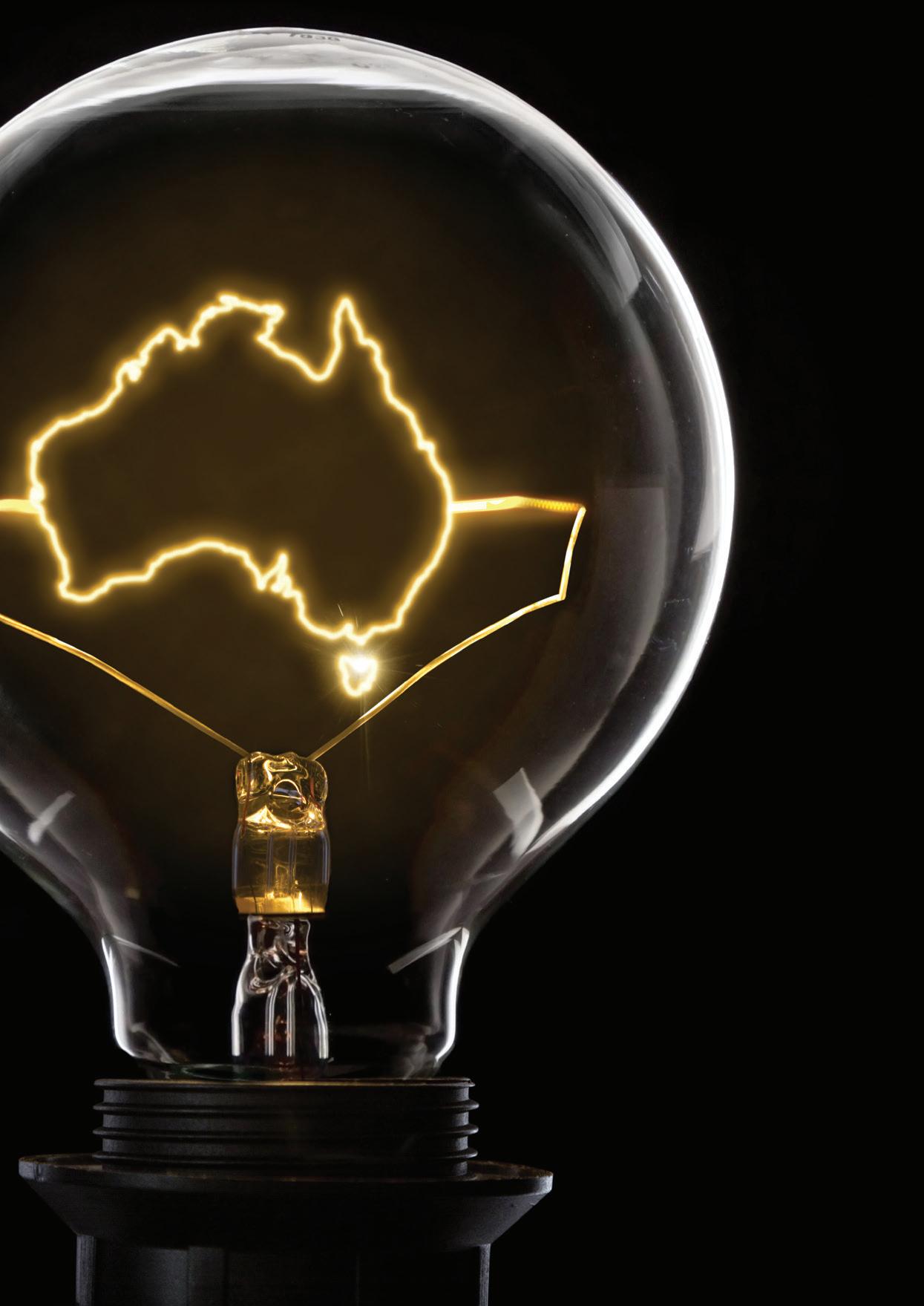
They accept the need to take advantage of changes in technology, however over half of those who contributed to the study acknowledged they lack the current capability to act upon their innovation ambitions. They feel limited by their ability to access innovation opportunities in these areas due to regulatory frameworks and organisational risk appetite.
Five other key takeaways from the study include:
1. Electricity networks have big ambitions for innovation in their businesses.
They see the need to direct a greater proportion of investment to transformational innovation in new products and markets. Today, 17 per cent of networks’ innovation investment is directed toward gamechanging, transformational innovations. In five years, networks want 24 per cent of innovation investments to have a transformational ambition.
2. Network businesses need to create the right environment for innovation to deliver on their big ambitions. 61 per cent say they do not effectively measure innovation progress or outcomes to identify when they’ve done it successfully or poorly. Only 11 per cent of businesses think they are effectively recognising and rewarding staff contribution to innovation.
3. Networks’ ability to innovate is constrained by their appetite for risk and the regulatory environment in which they operate. Australia’s regulatory framework defines areas in which regulated network activity can occur, including the types of activities that can be undertaken. In addition to regulatory requirements, businesses acknowledge a lack of appetite for risky investments. Many of the more innovative network businesses are more motivated to pursue higher risk opportunities where and when needed.
4. Network businesses are highly specialised and focus their innovation investment on core assets and business processes.
63 per cent of networks’ innovation investment is in core business. The challenge is to expand innovation effort into areas they find less comfortable in order to overcome the difficult structural changes needed and access opportunities to create value for consumers.
5. Some network businesses have welldefined and understood innovation strategies, but many also identify issues within their strategy or their ability to execute.
Strategies may articulate the networks’ ambition, but many are not clearly laying out the specific actions, roles

ABOUT THE AUTHORS
and responsibilities needed to deliver. Our analysis found no correlation between businesses’ innovation ambitions and their ability to execute. The barriers to innovate may be significant enough to prevent the delivery of new ideas and value creation.
What is clear is businesses need to have a bold, clear innovation strategy with tangible targets and expected outcomes, freeing people up to innovate in a disciplined way that embraces risk, and accepting potential failure in the pursuit of positive and sustainable results.
Where to from here?
Ultimately, network businesses will be able to say they have a high degree of innovation maturity and capability when innovation becomes an organisational core capability and is a highly systematised effort with adaptive capabilities. Processes, governance and resourcing will be refined, additional reinforcing mechanisms implemented to accelerate outcomes, and novel, specialised capabilities created to adapt to new opportunities.
The way we produce and use electricity is rapidly changing. It is essential that network businesses navigate this change and deliver the benefits of innovation to customers. Their ability to lead effectively will influence Australia’s ability to address the energy trilemma – cleaner, affordable and reliable electricity.

Michael Rath is a power sector specialist and National Leader for Energy and Resources.
Kumar Padisetti is a partner and leads Deloitte Access Economics’ Energy and Resources team.


















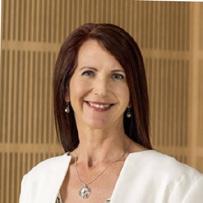

TECHNIQUES TO MITIGATE BUSHFIRE RISK WHEN DEPLOYING RECLOSERS
Throughout Australia, NOJA Power’s OSM Recloser has become the trusted name in bushfire mitigation technology. Collaboration between the Brisbane-based manufacturer and Australian utilities has culminated in a suite of protection and automation functionality deployed to resolve the challenges of Australia’s catastrophic bushfire season.
After the 2009 Victorian bushfire disaster, thousands of NOJA Power Reclosers were deployed to solve and mitigate bushfire risk. Nine years later, the system is still achieving its goal.
The key to bushfire mitigation strategy in reclosers relies on:
» Secure communications and control of the auto-reclosing sequence
» Advanced sensors and protection functionality designed to monitor and act on high-impedance earth faults
» Enclosing the insulation system completely in an IP66 rated enclosure
Any form of reclosing is not the solution to wildfire or bushfire mitigation, reclosers must be used in single shot mode on fire risk days.
Reclosing is an important but small part of an overall bushfire mitigation strategy. Utilities need to consider fault detection techniques to detect high impedance faults in the first place. Some of these protection capabilities available in NOJA Power’s OSM Recloser are listed in the table below.
NOJA Power OSM Recloser System
Bushfire Mitigation Strategies
Mechanical Protection and Automation
Arc Fault Venting
200mA SEF Minimum Pickup
Fully Enclosed Design High Resolution SEF
No Exposed Solid Dielectric ANSI46 Broken Conductor
Admittance Protection
Harmonics Protection
Negative Phase Sequence Protection
Smart Grid Automation
Whilst the deployment of NOJA Power Reclosers throughout Australia has been successful in mitigating fire risks across the country, it is imperative that the entire system be considered. For all the protection functionality in the device, an absolute necessity is arc fault control and venting.
The OSM Recloser is a fully encapsulated product, where the entire device is contained within a Stainless Steel IP66 Rated enclosure. This enclosure ensures arc fault containment and venting in accordance with the requirements of IEC62171-200 and confirmed by type test certification of the recloser at Test & Certification Australia.
For a full test video, go to www.nojapower.com.au/typetest/ recloser-arc-fault-containment-solid-dielectric.html

Not only does this rugged enclosure provide containment and controlled venting for arc faults, it protects the solid dielectric insulation from the harsh Australian sun. Solid dielectric insulation reliability is achieved by shielding the insulators from solar radiation.

“Bushfire risk is one of the greatest challenges that Australian electricity utilities face,” said NOJA Power Group Managing Director, Neil O’Sullivan.
“At NOJA Power, we have focused significant R&D resources to equip our OSM Recloser products with functionality and safety features to provide the tools to our electricity utility customers to correctly manage their bushfire mitigation programs.”


MICROGRIDS – NAVIGATING

NAVIGATING THE CHANGE
 by Frank Tudor, Managing Director, Horizon Power
by Frank Tudor, Managing Director, Horizon Power
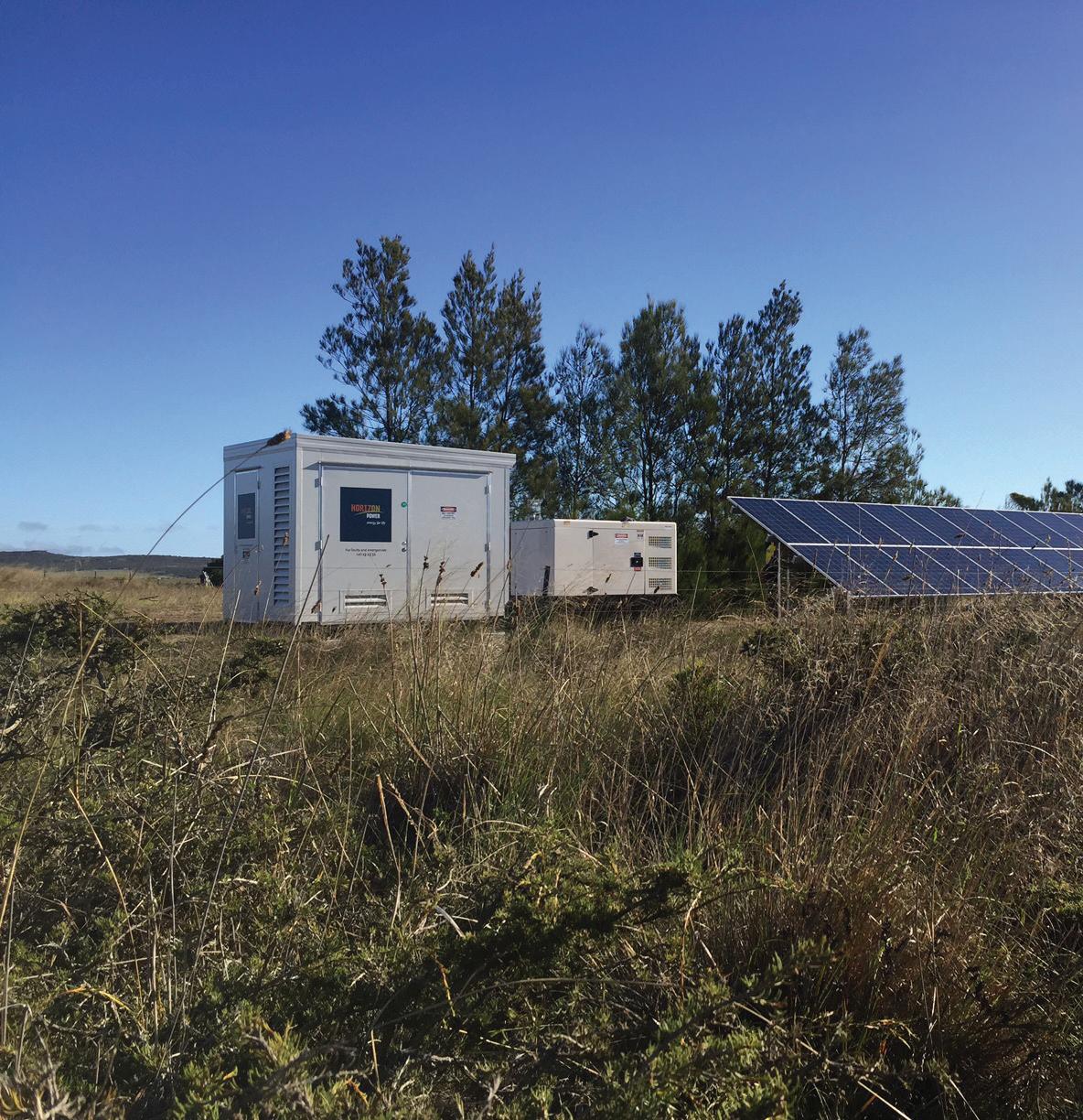
As Australia’s energy industry undergoes unprecedented change driven by consumers’ desire for more choice and control, Horizon Power’s unrelenting focus is on the future – and that future is microgrids.

Western Australia is helping to shape the energy transformation journey, with our regional and remote communities at the forefront of the energy production frontier.
Why? Because the technological changes currently underway are focused on integrating customers and their devices at the low voltage distribution side of networks.
This poses challenges at a technical level, to both integrate and then optimise the interaction of these devices at a very high level of penetration (more than 50 per cent) for the benefit of the individual owner and collectively for the interconnecting network system.
This also poses challenges around regulation and pricing. The ability to trial different concepts in partnership with communities, without the undue impediments of differential ownership of the existing supply system and heavy

regulation, make our portfolio of microgrids ideal development platforms (sandboxes if you will) to prove concepts, and develop capable and valuable intellectual property.
Microgrids are an ideal solution for our communities – Horizon Power services the biggest area with the least amount of customers in the world; for every 53.5km² of terrain, we have one customer. We have nearly 40 microgrids spread across a vast area of 2.5 million km².
Microgrids unlock the potential for technological advances, cost-saving measures, and more renewable and environmentally-friendly energy options to be implemented into a network.
Microgrids are self-sufficient electricity networks that can be embedded in, or be remote from, a larger network. These grids enable distributed energy resources like solar panels and batteries that are located away from a central power station to feed into the network.
As an intelligent network, a microgrid will also allow the integration of smart devices and appliances. Distributed energy resources can be combined to complement the main power supply and help meet demand, and can offer greater potential for consumer participation, catering to a future world where prosumers are the norm.
So the challenge we face is managing the integration of the distributed renewable energy sources into our existing networks.
Putting it into practice
At present, some microgrids in our service area, such as in Carnarvon and Broome, have reached capacity for how much solar energy they can host, but that will soon be a thing of the past as developments and upgrades are made.
The Pilbara town of Onslow is the first of our microgrids to be tested, with up to 50 per cent of the town’s energy needs to be delivered by a combination of solar and battery storage.
The project includes essential electricity network infrastructure upgrades, a new transmission line and substation, as well as a 5.25 megawatt gas-fired modular power station, designed to efficiently contract in size as the renewable energy contribution expands to meet energy needs.
Our Onslow microgrid project is one of the largest undertaken in the Asia Pacific region. Distributed energy resources will be integrated, in collaboration with
the community, at levels not previously achieved in remote microgrids. This work will see the replacement of the entire traditional power system in Onslow.
Our business strategy – something we invested significant time in to revolutionise – outlines the shift we want to see from traditional energy infrastructure to a future of more rooftop solar, batteries and stand-alone power systems in each of our electricity networks.
This approach is receiving widespread acclaim from industry experts. In 2017, Deloitte named Horizon Power as one of the three most innovative electricity companies in the nation.
Running
with the research
Our strategy is based on forecasts that by 2050, around 62 per cent of our systems will be best served by distributed energy resources, 12 per cent will be offgrid (such as standalone power systems), and the remaining 26 per cent will remain centralised, but incorporate a high level of renewable sources.
As a result, carbon emissions are forecast to reduce by 51 per cent over the same timeframe, while reliability will improve and overall system security will be maintained.
Bloomberg notes that more has been spent globally in recent years on renewables than thermal generation, and Navigant Research anticipates that more will be spent on distributed rather than centralised renewable energy by the end of this decade.
Studies by CSIRO and Energy Networks Australia foreshadow a similar trend towards distribution enabled by advances in technology. This will inevitably challenge regulation, business models and the very essence of the status quo in the electricity industry which has developed without much change over the last century.
I would argue that microgrids in their various guises will form the DNA of the electricity industry in the 21st century.
The technology we are developing here in regional Western Australia will steer the nation’s energy industry into the future and help us achieve our core business objective – to become the world’s leading microgrid company.
Ours is a rare and unique portfolio, and one that is ideal for developing and refining the products and services for this new world of energy.
To watch a video of Horizon Power’s Onlsow project, visit www.youtube.com/watch?v=m3gIvLZt_Kc

OPTIMISING YOUR ELECTRICITY NETWORK THROUGH ADVANCED INTELLIGENCE ASSET MANAGEMENT
Effective asset management is critical in ensuring utilities can improve efficiency and reduce costs without compromising service quality. More than just maintenance, Enterprise Asset Management (EAM) aims to optimise the entire lifecycle of an organisation’s physical assets.
With big data and the IoT transforming the way asset information is managed in the digital age, more and more organisations are looking at implementing advanced EAM software to ensure assets operate more efficiently and with minimal disruption.
By setting up a dedicated EAM platform, utilities can monitor and analyse the real-time condition of their assets, offering more informed decision-making and opportunities for preventative maintenance and asset life extension.
With concerns about aging assets and the cost of replacement, utilities are seeking maximum cost efficiency and return on their assets.
IPS-ENERGY Australia Pacific is the Australian branch of IPS-Company Group, a global organisation headquartered in Munich, Germany, that specialises in Enterprise Asset Management for electrical power utilities.
The company works with utilities across five continents to deliver one of the world’s most comprehensive asset libraries and all necessary data models for electrotechnical equipment.
IPS-Systems™ products can provide support for entire substations, including both the primary and secondary equipment inside, as well as power lines and cables.
With a variety of module groups, IPS can implement a brand-new EAM system or improve an existing EAM by filling in any gaps in the software.
IPS-SYSTEMS™ Editions and Module Groups include IPS-ENERGY, IPSSmartGridDI™ and IPS-EPIS™, all of which are available in the latest release and at different pricing structures (Core, Executive and Enterprise). The products are aligned to ISO 55000 and PAS 55 standards, as well as others in the industry.
Whether purchasing a complete specialised EAM platform or auxiliary modules, IPS-SYSTEMS™ products can provide utilities with a range of functions, including advanced Asset Performance
Management (APM), intelligent electronic device (IED) configuration management, maintenance concept, planning, work ordering, work execution, maintenance analysis, and mobile workforce management, with mobile access to technical documentation and a geolocation interface.
Current Australian Customers include Energy Queensland (Ergon Energy and Energex), ElectraNet and Horizon Power, with IPS biggest global customer being American Electric Power, one of the largest electric utilities in the US, serving nearly 5.4 million customers in 11 states.
According to Gartner, the world’s leading IT research and advisory company, utilities looking for a product tailored to an engineering focus on physical characteristics should consider IPSSystems in their shortlist.

For more information and product specifications, visit www.ips-energy.com, call +61 3 9042 8081 or email info.au@ips-energy.com.

PLOYS OF SUMMER
by Energy Networks Australia CEO Andrew DillonCould keeping the lights on during the height of summer be as simple – or as complex - as rewarding customers?
It’s just one of the ways electricity networks are working with customers to find smarter ways to manage demand when the mercury rises.
Against the wind
Networks provide Australians with a robust and reliable essential service. The stats speak for themselves, the number of unplanned outages has generally declined over the past decade. Now, energy customers across the NEM on average experience around 1.5 outages each year, and the frequency of outages fell in 2015 – 16 in Queensland and New South Wales.1 Ausgrid's network supply reliability for the last five year period has been the best on record for Ausgrid (in over 50 years), with a stabilisation of the average number of interruptions per year to approximately 0.7 outages per year per customer, down from previous figures of over one. An average Endeavour Energy customer has only one outage of about 80 minutes per year.
Last year was our third hottest year on record, according to the Bureau of Meteorology’s annual climate statement. Summer’s extreme temperatures represent a challenge for grid operators to deliver safe, reliable energy as we all switch on our air conditioning to cool off.
Meeting this challenge is a significant driver of network costsand the development of new, smarter ways to manage this peak demand that don’t involve building more poles and wires is core business for network businesses. Rapidly evolving technologies that are transforming our energy system will also help us ride out the heatwaves of summers to come and avoid increases in power bills.
Power to the people
Customers’ continued appetite for home solar and storage provides networks with new and exciting opportunities to manage peak electricity demand. This includes rewarding the timely use of these distributed energy resources to provide grid support when it’s needed.
The Electricity Network Transformation Roadmap with the CSIRO shows that by 2027, more than 40 per cent of customers will use on-site resources like solar and storage. By 2050, it’s expected that almost two thirds of customers will have distributed energy resources. How well we coordinate these resources – known as orchestration – will be critical to keeping costs down.
The Roadmap estimates network service providers would buy grid support from customers with distributed energy resources worth $2.5 billion per year by 2050. Orchestration working well will avoid the need for $16 billion in network investment in infrastructure such as poles and wires.
In its 2012 Power of Choice Review, the Australian Energy Market Commission (AEMC) found that demand management could save between $4.3 billion and $11.8 billion over the next ten years. Demand management is already being used by networks today.
Electric dreams come true
Networks have big ambitions and are walking the talk. Demand management programs, trials and projects are being carried out by networks across Australia.
Energex
» Is conducting residential battery trials to gain insights to enable the connection of household batteries to the network, and to explore the possibility of accessing and remotely controlling batteries at certain peak times.
» Is rewarding customers for managing their energy use through its Positive Payback program.
Ergon Energy
» Has a Grid Utility Support System (GUSS), which is an awardwinning, edge-of-network storage product that provides support to customers serviced by the Single Wire Earth Return network. Each GUSS unit is an advanced, costeffective technology solution that can reduce peak loads and supply reliable voltage levels.
Energy Queensland
» Yurika’s Virtual Power Plant is a cloud-based platform that intelligently manages different power sources and consolidates the information to create meaningful data. This enables the supply of more affordable and reliable energy by optimising its use and putting downward pressure on power prices.
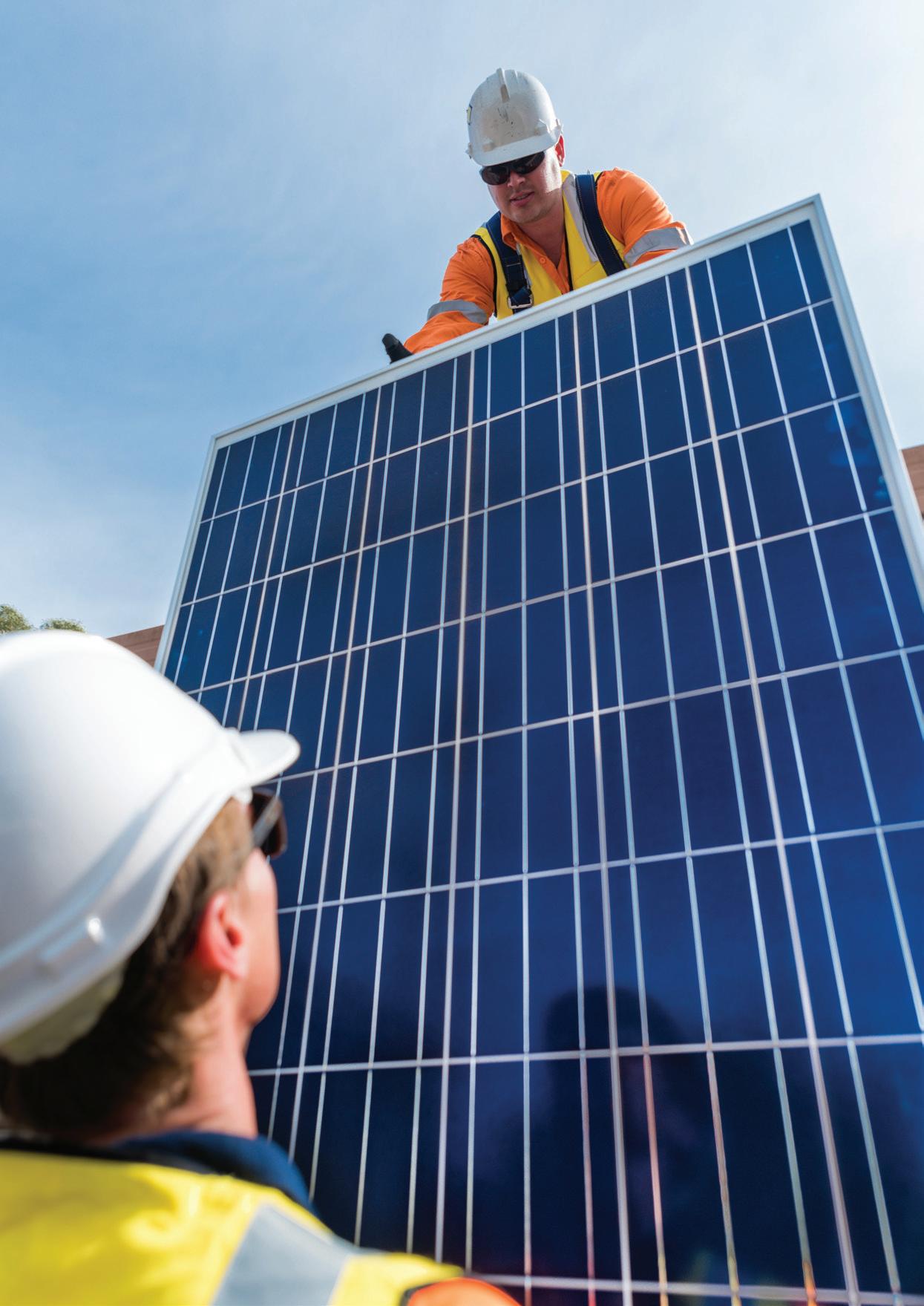

Essential Energy
» Is signing up regional NSW residents to participate in a trial to assess the potential for customer-owned battery storage systems and advanced solar inverters to help better manage demand for network capacity.
Ausgrid
» Its CoolSaver air conditioning trial is investigating efficient management of power consumption of air conditioners during peak hot and winter days.
Endeavour Energy
» Its SolarSaver program aims to use the energy stored in a battery installed in selected homes with solar panels, to reduce the electricity delivered from the network during peak demand times.
» Its Grid Battery Energy Storage System trial is testing the efficiency and network support benefits of a grid-scale Battery Energy Storage System.
United Energy
» Has a Summer Saver program that offers customers located in constrained areas cash incentives to reduce their demand during peak periods on “event days”, generally hot weather above 35°C.
» Has partnered with Greensync to deliver the Community Grids Project to provide customers with incentives to help them reduce and/or shift their electricity usage voluntarily or by using solar and energy storage systems.
» Has been undertaking a trial of Commercial and Residential Solar Storage Installations on the Distribution Network to explore using solar and energy storage as an alternative to investment in traditional network infrastructure.
» Its Dynamic Voltage Management System Trial uses a proven method for reducing energy and peak demand on distribution networks.
Powercor
» Has partnered with a small community in Victoria to trial a new electricity tariff which will allow customers there to trade energy with each other without being charged.
» Has a hot water controlled load tariff that enables them to manage the hot water heating load of participating customers via their smart meter network.
AusNet Services
» Works with business customers through their Critical Peak Demand tariff. Introduced in 2011, it involves large businesses agreeing to cut energy consumption during periods of peak electricity demand.
» Is trialling Australia’s first mini grid in an established community. The Mooroolbark Mini Grid project envisages a future where Distributed Energy Resources play a major role in the electricity supply system.
Jemena
» Recently launched a new demand response project which encourages Melbourne households to make small changes to their summer electricity usage.
SA Power Networks
» Its award winning Salisbury trial in Adelaide gave 100 customers batteries to defer $2.9 million in network upgrades.
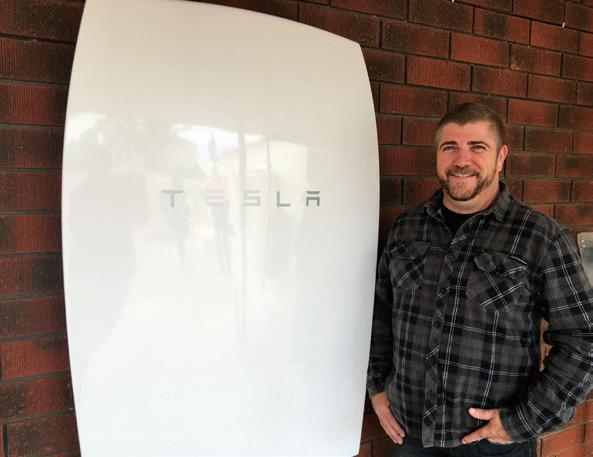
TasNetworks
» Is part of the Bruny Island Battery Trial which will look at how battery-PV systems can be used by customers to manage their energy and simultaneously help manage the network.
Horizon Power
» Is trialling energy management via the customer through their Power Ahead pilot in Port Hedland where 500 residential and business customers have targets for usage in peak and off peak times.
Western Power
» Is investigating alternatives to building more infrastructure for the constrained Mandurah area. This also provides the opportunity to consider demand side management with major customers in the area. It is finalising an agreement with major customers to reduce their load during times of high demand. Network Opportunity Maps released last year as part of a collaboration between Energy Networks Australia, ISF and ARENA will also help networks to align distributed energy resources to help build a smarter and more reliable grid.
We’ve got to break free
Networks need to be able to break free of their regulatory shackles in order to fully embrace the opportunities new technologies present. The Finkel Review highlighted an urgent need to ensure market rules and frameworks enable the introduction of emerging technologies and the ability to test them. The Australian Energy Regulator’s new Demand Management Incentive Scheme and Innovation Allowance Mechanism for electricity distribution networks are a welcome step in the right direction.
The projects and programs being rolled out by Australian networks today prove networks are not afraid to try doing things differently and are acutely aware of the need to act now. Networks are determined to keep up with the energy transformation in order to keep the lights on and prices down. The heat is on.

SYSTEM 2.0 –TOWARDS A NEW ENERGY SYSTEM AND INVESTMENT PARADIGM
by Matt Rennie, Oceania Power & Utilities Leader, EY
The way that capital is currently flowing into the new energy sector globally is changing and here Matt Rennie from EY explores why there is a strong need for a completely different approach by investors over the next 10 years.


When Rosa Luxemburg famously said, “Those who do not move, do not notice their chains”, she could not have known the relevance of these words to the electricity industry of the 20th and 21st centuries. Indeed, disruption looks set to strike the electricity industry and its 140 year-old linear production and distribution chain, in much the same way as it has the transportation and accommodation industries.
Technology, consumer products and energy have converged over the last 15 years and investors, C-suite management and governments are now preparing for the emergence of a new energy ecosystem and anticipating a range of value shifts in the industry which will produce significant winners and losers.
Navigating from current market dynamics, insulating portfolios and maximising the power of investments means understanding and anticipating where things are going, how companies and technologies will fit, which technologies will be essential and who will buy them.
The new electricity system of tomorrow will be driven by a convergence of smarter investments, technological advancements, and changes in consumer demand to greater proactivity and control. We will see a major shift from the traditional energy landscape to a system that will be defined by four new changed market and technological conditions.
1.
A new generation paradigm
We are indeed in the midst of a changing generation landscape, as the 50 year tide of coal-fired power recedes and is replaced by thousands of new renewable projects globally.
Recent price outcomes under $20/MWh in the Middle East for renewable, while indeed low, show the benefits of scale for EPC and finance, and global pressure to deploy capital, while new large-scale storage for frequency response, as illustrated by the recent projects in South Australia, demonstrate a market response to intermittency.
This is just the beginning, however. Industry insiders tip that the next 15 years will bring with it a new paradigm of baseload and peaking generation, with conventional and renewable energy base load generation augmented gas generators and, increasingly, storage to manage the peak.
As the number of renewable projects increases, so too the pipeline, and we anticipate current blockages with PPAs to be met by increased enthusiasm for merchant plant over the next ten years, with financing based on attributes of

location and grid connection. Those projects in good solar areas, with portable and replaceable technology, and on conveniently dispatched parts of the grid will determine the winners from the losers.
Meeting the peak will become the new sport in a world dominated by renewables, with large-scale storage enabled by shortterm settlement arrangements in wholesale markets set to complement open cycle gas turbines and better ramp rates for conventional utilities to meet peaks. For this reason, we expect the availability and pricing of gas to become even more pressing an issue than ever before in determining electricity prices.
2. An enhanced role for electricity networks
With changes in generation will come changes in the transportation arrangements required to service it. We expect a new age for transmission networks, maturing from point to point AC
to an enhanced role as providers of HVDC transportation between markets, stretching the reach of the grid to enable the new decentralised world of renewables as, for example, new technologies such as those being developed by GEIDCO in China, commercialise and alter the landscape.
On the distribution side, as new technologies designed to arbitrage localised network peaks become mainstream and find counterparties, we expect a split to emerge between valuation methodologies for regulated transmission and distribution companies, which will increasingly compete with, and be enabled by, storage.
While replacement cost valuations will remain the basis for regulated asset based for transmission, we expect this paradigm will be challenged over the next ten years for distribution as the peaks increase at a diminishing rate and then, depending on the implementation of electric vehicles, begin to flatten.
3. A new look distribution system
The world of solar and storage is changing the nature and use of the distribution system, as the focus on household beyond-the-meter storage is replaced by investment cases for storage within transformers and substations, enabling load flow management across the distribution network.
We see this trend continuing – as peak flattening, and the reduced growth of capital expenditure and pressure on regulated asset valuations that will accompany it, change the focus for C-suite management and investors in these assets. We expect a strong pivot to additional investment in technologies and activities that increase revenue and profit yield from the network.
Value shifts, pressure on leverage, and the aggressive creation of new business models will become the norm for distribution companies looking to retain rates of return among a changing commercial landscape.
4. The rise of digital in retail
With such changes in generation and networks emerging, how best to supply and engage customers? While customer scale and margin have long defined success for retailers, digital customerfocused platforms will likely become the new playing field. The emergence of digitally enabled, large-scale retail companies which are integrated with conventional peaking plant and storage to manage wholesale risk, will be best placed in this new peakless decentralised system.
With new instruments come new musicians – small-scale, electricity or dual fuel retailers will likely face new competition from tech-enabled, large customer base entrants hungry to achieve scale through deployment of existing platforms to new users. We expect pressure on profits and values for those retailers engaged in “margin selling” as distinct from partnership models, and new entry retailers to face pressure to lease digital platforms to compete effectively and to gain customers from a higher relative cost platform.
A new system and investment paradigm
All of these evolutions change both the value of capital and ultimately its source - with returns contingent on not only technologies and roles, but regulatory arrangements, revenue recovery, price signalling and counterparties. New entrants that find counterparties will flourish, and those that don’t will form part of the forest floor.
The very fabric of the power system will change, and the way utilities view their role in it will also need to change. We expect a greater role for venture and growth capital, in a world traditionally dominated by yield investors.
Electricity is an industry in transformation, and with risk comes opportunity as new secondary markets flourish. Investments made now in cyber security, market modelling and load flow, frequency response, ramp rate technologies and system planning using data analytics will pay benefits, once new regulatory arrangements driven by innovative stakeholders combine with new markets as network peaks become priced effectively and generation settlement intervals become shorter.
Knowing which buttons to press, which levers to pull, and the optimal mix of policy instruments will be critical, as financial engineering takes a distant second to deep sector expertise and system understanding. The industry will be forced to think holistically about the convergence of sectors, technologies and social drivers that will be essential in picking winners and avoiding losers. It will be a time for expertise, and for an educated understanding of how to match venture, growth and yield capital with the investment needs of the future energy market.
Those who do not move, do not notice their chains. Have you started to move?
AUSTRALIAN SOLAR
PREVIOUS RECORD
by Natalie Collard, Executive General Manager – Industry Development, Clean Energy CouncilA funny thing happens when politicians spend an entire year talking about high power bills and an ‘energy crisis’ – many people start looking into producing their own power rather than continuing to put up with skyrocketing energy prices. With prices for rooftop solar power systems continuing to decline, the sun was definitely shining on the industry in 2017. So much so that the industry logged its biggest year in Australian history.
Early estimates suggest that the amount of solar generation last year eclipsed the previous best in 2012 by around 20 per cent, as businesses and households switched on to renewable energy on a scale never before seen.
Some 1.25GW of new solar PV was installed, shattering the previous mark of just over 1GW which was set five years earlier in the middle of the first solar boom. With solar being used by 1.7 million homes and tens of thousands of businesses, it is not alternative energy anymore. When solar is combined with batteries for greater flexibility, it looks more and more like the energy source of the future.
One of the big differences is that back in 2012, many state governments still offered premium rates for solar electricity supplied by private homes. These sweeteners are now all but gone, and the industry is moving steadily towards long-term sustainability based on price and consumer demand.
Today the cost of power affects all consumers. Farmers, airports, shopping centres, apartment buildings, homes and small businesses are all installing solar power and storage to take the heat out of their power bills. It’s not the latte belt which is most interested in solar – it’s rural towns and mortgage belt suburbs where families feel every rise in electricity prices, and they are taking action to save over the long term.
With more than 50 times more solar power installed in 2017 than what was being installed a decade earlier, the data emphasises that more Australians are worried about their power bills than ever before. Solar has become one of the most affordable options to drive down the figure on the bill. Combined with seemingly constant media and political attention, bill shock has become a national issue. And consumers have definitely been tuning in.
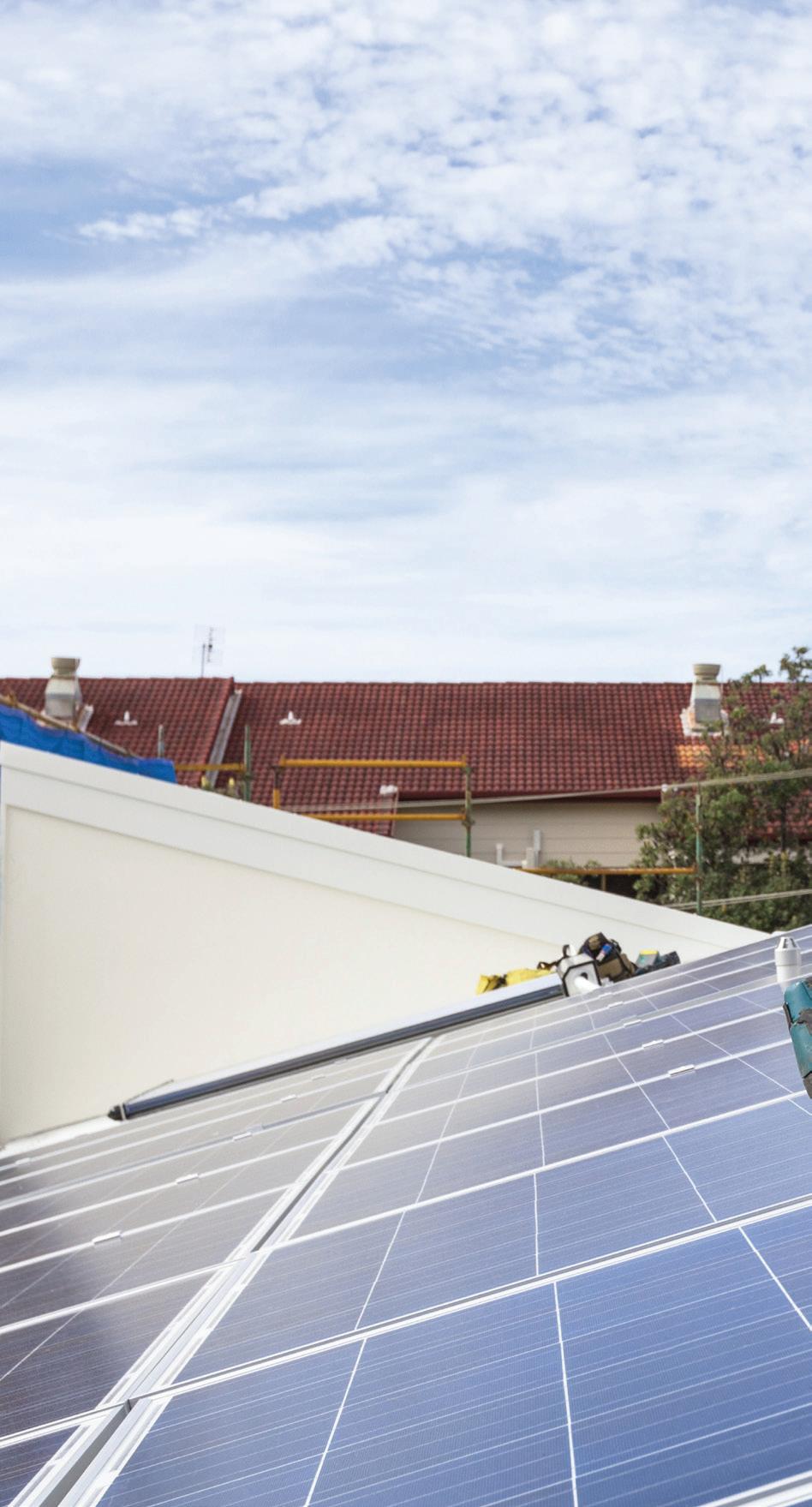
Skills shortages as industry scrambles to meet demand
With the industry booming, one of the challenges is finding skilled solar to finish all the installation work that is being booked by customers.
There is always a challenge with meeting demand towards the end of the year, with lots of people wanting a system to be installed before Christmas, and installers who are intent on taking their summer break just like everyone else.
But 2017 was very different. Many solar businesses are reporting there is simply not skilled staff to meet demand, particularly over the last quarter of the calendar year. Wait times of 3-4 weeks are blowing out to 2-3 months in some cases, pushing up wages for experienced installers who are suddenly in high demand.
On the plus side, these are the kinds of challenges you get when an industry is booming, and you’d much rather manage this situation than the reverse – where you have plenty of staff but not enough work.
The market is responding. There are opportunities for electricians in particular to either renew their solar accreditation, or for sparkies who haven’t previously worked with solar to upskill through training and work with solar and storage for the first time.
The Clean Energy Council runs an accreditation program for solar installers and, as you might expect given the record installation numbers last year, more solar installers were accredited at the end of 2017 (just under 5,000) than during the previous high water mark in 2012. Just under 100 new solar installers were accredited per month last year, a 60 per cent rise on the year before.
We are hopeful that the influx of new installers will help to clear the bottleneck.
Another bright year predicted in 2018
While it’s always hard to know what the year will bring, many of the fundamentals are in place for another very strong year for the solar industry.
Many businesses are finding it difficult to secure affordable, long-term contracts for their electricity, making solar and storage increasingly attractive options – particularly with the range of finance options that are now available. This medium-scale section of the market has been driving a large part of the growth over the last few years.
Meanwhile, mums and dads in outer suburbs and regional towns will continue to turn towards household renewable energy to help protect them from future price hikes.
According to Warwick Johnston, the Managing Director of SunWiz, there are six key factors that will influence solar PV in 2018:
1. Electricity prices and feed-in tariffs
2. Rate that electricity prices are rising
3. PV system prices
4. Awareness
5. Momentum
6. Market robustness
Johnston says that with electricity prices set to remain high, the momentum in the sector and a robust market, the residential and SME market is “primed to continue” at over 1.2GW in 2018. Combined with a record construction year for the large-scale part of the market, solar is well positioned to be the new gold rush out to 2020 and beyond.

SUNNY DAYS

DAYS AHEAD:

EMERGING SOLAR TECHNOLOGIES
With production costs plummeting and energy efficiency improving, the future of Australia’s solar industry looks bright. Here, we chat to Dr Gregory Wilson, Research Group Leader Solar Energy Systems at CSIRO Energy about some of the innovative technologies and research that are currently impacting the sector and transforming the way we convert sunlight into energy.
The Solar Energy Systems Group, based out of Newcastle, is the largest solar research group in Australia, researching both photovoltaic (PV) and concentrated solar thermal (CST) technologies. There are around 50 members in the group, including 30 full-time engineers and scientists.
They encompass everything from the development of new PV technologies, understanding performance of current commercial photovoltaic panels on the market, informing installers and system developers to engineering, developing and demonstrating new CST technologies.
Dr Wilson leads this group and has been involved in solar energy for the past 18 years, with at least 12 of those being at CSIRO. He has a background in chemistry with a focus on the science of new materials for solar PV and CST technologies.
“I have worked on a broad range of renewable technologies from new materials for electrical energy storage – so the new types of lithium ion batteries and asymmetric super-capacitors – all the way through to photovoltaics and solar thermal technologies. This has predominantly been in coatings. Such coatings can range from something on a surface for making mirrors more highly reflective, through to coatings that are actually light active, such as photovoltaic materials,” Dr Wilson said.
Investment in concentrated solar thermal heats up
One of the projects Dr Wilson manages is research and development of extremely high temperature systems, reaching up to 700 or 800°C, which can enable the use of molten metals or supercritical gas as the heat transfer medium for capturing (and storing) solar energy. These high temperatures hold promise for much higher efficiency solar energy capture and storage yet there are important materials and engineering challenges to overcome before these will be commercially ready.
Concentrated solar thermal (CST) technologies utilise high-temperature solar thermal energy, and can be used to drive a range of industrial applications, including electricity production, and due to the inherent high temperatures, chemical reactions and indeed industrial processes. The most proven CST technologies generate electricity using molten salts at 500 or 600°C to absorb the sun’s energy, convert this to steam that drives a turbine to produce electricity. The next generation of CST technologies, at higher temperatures, will do more and will enable production of liquid fuels and alternatives to natural gas – solar fuels – think ‘green’ diesel or aviation fuels.
In all CST technologies, reflectors are used to collect the solar radiation and concentrate it on a receiver with a much smaller area. A higher concentration ratio of reflector-to-receiver area produces higher flux at the receiver, allowing higher temperatures to be achieved in a heat transfer fluid.
The thermal energy in the heat transfer fluid can then either be stored, converted into process heat, or converted into mechanical energy and ultimately into electricity through a power cycle.
This property of CST systems opens up the possibility of solar fuels, which are important not just for the energy sector, but it can also be used as liquid fuels for cars or aircraft, or chemical storage through ammonia production and a future hydrogen export market.
“Using thermal storage at those high temperatures, 700 or 800°C, will unlock a whole range of different technologies and applications to generate downstream products that cannot be obtained efficiently just by renewable energy in the form of electricity alone,” Dr Wilson said.
A key project in Dr Wilson’s Group, and critical to the success of CST, is the Australian Solar Thermal Research Institute (ASTRI), an $87 million, eight year international collaboration with research institutions, industry bodies and universities transforming Australia into a global leader in concentrated solar thermal power technologies.
CSIRO is leading this global collaboration by partnering with six Australian universities and the United States’ Department of Energy’s National Renewable Energy Laboratory (NREL), Sandia National Laboratories and Arizona State University.
ASTRI is supported by the Australian Government, through the Australian Renewable Energy Agency (ARENA), and its goal is to lower the cost of concentrated solar thermal power so that all Australians have access to cheap, clean and secure energy.
Although CST offers a number of benefits over other renewable energy technologies, such as its characteristic thermal storage and capacity for energy dispatch, it is yet to reach the installation cost of wind, hydro or photovoltaics.
The most significant advantage of CST technologies over other renewable energy technologies is the ability to store thermal energy and convert it into process heat or into electricity when needed, creating dispatchable power generation. A differentiating factor for CST – storage and dispatch – will see increased acceptance and adoption under the Australian
Government’s National Energy Guarantee (NEG) as CST uniquely can support the provision of reliable, secure and affordable electricity.

Enhancing crystalline photovoltaic technology through cheap and abundant materials
Thin-film perovskite solar cells have emerged as an inexpensive and revolutionary type of photoactive semiconductor in thin-film solar PV’s, with a 22 per cent light-to-electrical power conversion efficiency (PCE) making them one of the highest performing technologies today.
This breakthrough technology is based on a new class of semiconductor material in the PV space – metal halide perovskite – which is a crystalline material structurally similar to the mineral ‘perovskite’ (calcium titanium oxide) named after the Russian mineralogist Lev Perovski. Perovskite refers to any material with the same type of crystal structure as calcium titanium oxide, and this new class of metal halide perovskite gives the material unique high-performing semiconductor properties.
“These perovskites are an exciting addition to our research,” Dr Wilson remarked. “We can leverage exactly what’s happening in photovoltaics now, which is this big growth and deployment of silicon-based technologies and combine with a really cheap and abundant material. This allows us to work toward a new solar cell technology that will provide a higher energy yield, with a cost benefit to both the manufacturer, as well as the end energy consumer.”
Advances in these solar cell materials offer high efficiency at low cost. However,
further research and development is needed to demonstrate emerging perovskite technology as stable, durable and reliable, compared with traditional solar panels based on silicon wafers.
The high embodied energy cost of silicon solar cells and their complex production process has generated considerable interest over the past decade in developing alternative solar cell technologies using organic photovoltaics (OPV’s). Perovskite solar cells are sometimes referred to as an OPV technology, yet they are fast making a name for themselves.
“Perovskite semiconductors are made by a solution process, making them roomtemperature processable and will enable cost effective manufacture,” Dr Wilson said.
“The key benefit of perovskites is that the crystalised structure works with a range of organic and inorganic materials, so you end up with these hybrid organic-inorganic semiconductors that have really nice, what are called, ‘opto-electronic’ properties. The next few years will see more breakthroughs and more records broken; there’s clearly a bright future for perovskite solar cells.”
Ensuring solar’s future as a competitive industry
Dr Wilson explained that the main challenge for the solar industry is understanding that the transition to a cleaner energy future is a journey that cannot happen overnight.
“We all want to see a big renewable energy revolution, yet it just won’t happen tomorrow. We understand that this is a 20 or 30 year timeframe, and over the next 10 years there’s going to be some big changes that both CSIRO, and all researchers in the renewable energy space, need to help our industry partners manage,” Dr Wilson said.
A major challenge for the industry is identifying new ways to harvest energy from the sun that are highly energy efficient and cost-effective, and can potentially create a valuable export proposition for Australia. The next big thing in renewables is using hydrogen as a chemical energy carrier, offering a cleaner alternative to traditional liquid fuels and gases.
A future export market, the production of hydrogen as a fuel, can be driven by renewable energy, particularly solar, as it is the most direct way of utilsing the energy needed to convert and store hydrogen as a chemical energy carrier. Utilisation of hydrogen as a fuel is based on capture and release of energy in chemical bonds, so compounds with a high composition of hydrogen – such as ammonia – make ideal energy carriers.
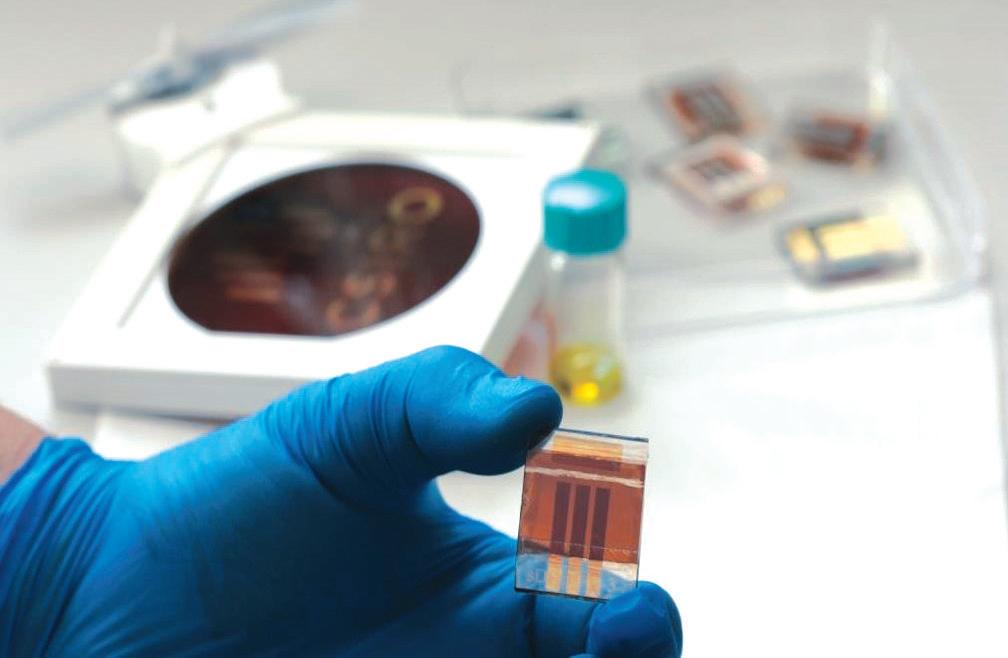
Redirection from traditional fuels to carriers like ammonia will drive creation of new energy systems which means the energy sector will have to learn how to alter and modify its supply chain to enable the transport of hydrogen both within Australia and overseas.
“CSIRO has established a hydrogen energy systems program – a future science platform – to target this new challenge. There’s also a big push through ARENA, which we’ll see more of over the next 12 months or so, to position hydrogen as an export market for Australia. Instead of exporting natural gas reserves, we can export the sun, essentially, through the use of hydrogen,” Dr Wilson said.
Dr Wilson pointed out that in the future there will be more than just the traditional rooftop based technologies and even large-scale commercial solar farms. Although these will be the main generators of electricity, the ability to utilise different complementary technologies to better respond to fluctuations in energy demand and consumption will be key to mapping out Australia’s future energy mix.
“One fact to consider is the energy mismatch between peak generation and peak utilisation. Lots of renewable energy generation is during the peak of the day, around the middle of the day, and then in the afternoons and into the evenings, this is when peak utilsation occurs when
there’s not as much renewable resources available such as solar. The solution is a mix of energy technologies for supply and demand,” Dr Wilson said.
“Therefore, as researchers, we need to understand more about how we store and distribute energy into the late hours. Realising that this means more than just electricity, which is sometimes overlooked, we come to realise the energy solution has to be more than just battery-based storage.
“Technologies such as concentrated solar thermal, which has the ability to store solar energy during the day, while not using it at all, and only dispatch at night using a thermal storage medium become more attractive. CST is a thermal battery, able to store and release heat energy day or night. A real game-changer for the industry will be to understand how do we work with these new technologies and how do they complement other renewables like photovoltaics and wind.”
While change is inevitable, it can be met with resistance and a fear of the unknown. This is why CSIRO undertakes research to understand the current status of industry and technologies and, in turn, how it can help businesses adapt.
“The process of adapting is a bit of a two-way street. Researchers will come up with new ideas, technologies and concepts based on industry needs and in response installers and manufacturers will then need
to understand those ideas and engineer a solution that works with existing systems.
“Over the next few years we’ll start to see such transitions when new, higher performance, increased energy efficient solar panels are developed: how do we integrate these into existing systems? New PV technologies will have higher voltages and increased currents; how will engineers adapt and incorporate these into new systems under design?,” Dr Wilson said.
Ultimately, the future of solar lies in investing in technological innovations that will make future solar energy more efficient, more reliable and cheaper to produce.
“Solar and energy storage is more than photovoltaics and batteries. That part of the future energy mix is certain, we have to include renewables like concentrated solar thermal, as it inherently has storage – a thermal battery.
“Just think that until around 2015, more energy could be stored in a single CST plant in the US than all the lithium batteries ever produced. Lithium batteries are certainly making impact in the energy sector and I’d like to think the CST plant to be built by SolarReserve in South Australia is the first of hopefully many that will be rolled out across our sun soaked country and will equally signify big changes for solar in Australia,” Dr Wilson said.
SPEED, POWER AND MOBILITY KEY TO SOLAR SUCCESS
The Australian utility-scale solar market has been gaining momentum, and increasing competition amongst engineering, procurement and construction (EPC) contractors is leading to demands for top-in-class piling services. In order to meet these demands Sequentia Services has taken a holistic approach to the market, selecting equipment and a supplier that allows them to exceed client expectations despite Australia’s challenging installation environments.
Sequentia Services specialises in servicing the largescale solar farm and the utilities construction sector. On solar farms, its primary focus is the installation of piles that support the arrays of solar panels.
A holistic approach to machine selection
Eamon Doyle, Managing Director at Sequentia Services, said the company took a holistic approach to the market and the services it provides when building its piling fleet.
Among the key considerations that were taken into account were:
» The machines needed to get the job done effectively in varying ground conditions while meeting piling tolerances and velocity rates
» With its wide client base, the supplier needed to be able to provide excellent support no matter the project location
» The machinery needed to be robust in order to handle the harsh nature of percussive pile driving and solar farm environments
» Machine availability and utilisation needed to be high, with the supplier having trained staff and carrying the right parts in the right locations
“After evaluating the products on offer we felt like two manufacturers’ piling equipment stood out. In the end the choice to go with Vermeer was made on what we believe to be the lowest cost per pile installed over the life of the machine,” Mr Doyle said.
“The Vermeer PD10 is our piling machine of choice. The PD10 is a high frequency, high impact hydraulic hammer driven piling machine. It is capable of being operated from a ROPS compliant operators station, or remotely via a hand held controller. With our longest mast sections we can handle piles up to six meters in length. An auto plumb feature brings the pile to a true vertical position easing the operating teams workload.

“Vermeer also has the ability to respond quickly anywhere in Australia. It has a network of branches across the country as well online monitoring tools with features such as machine hours, any faults that may be happening or have been logged, location, fuel consumption, notifications on upcoming scheduled and planned maintenance events, updates and access to the operation, parts and service literature.”
Improving productivity in rough terrain
Sequentia Services is currently delivering a project for Catcon in Port Augusta, South Australia. The solar farm is being delivered over three stages, requiring a total installation of over 160,000 piles. Once complete it will have an overall capacity of 300MW.
Mr Doyle said the PD10 has proven particularly effective in handling the rough terrain of Port Augusta which is uneven and cannot be altered.
“The PD10’s broad ground cover, wide tracks and levelling abilities has allowed the piling production to reach the best possible production rates for the conditions,” Mr Doyle said.
“The temperature in this region can top 48°C; having a machine whereby we can take the stresses off the crew by having them seated, using electric controlled joysticks rather than levers acting directly on hydraulic control valves is valuable.
“Also on this uneven ground, the auto plumb feature is priceless, saving time and producing the accuracy required. The auto plumb has been working overtime, with significant adjustments of the mast positions every pile, and the varying subsoil conditions across the site meaning piling has required more force.
“Combined with its high piling force, this all means we can be more productive over the long run.”

The importance of a supportive relationship
Mr Doyle said that the service and support Vermeer has provided Sequentia from the purchasing of the PD10 through to their ongoing field service, has played a part in their success and the decision to purchase additional PD10s.
“I think it’s difficult to quantify the benefit a supportive relationship with the equipment supplier brings until the chips are down. Vermeer has been in Australia and supporting major infrastructure projects for almost 30 years now. Knowing that, if and when something gets out of parameters, Vermeer is only a phone call away, that gives me a lot of confidence in taking on jobs that are remote and difficult.
“Vermeer has been a pleasure to deal with. Ken Smith and the Brisbane team have been open and easy to communicate and deal with, as well as Nigel Dobier and Matt Reid in North Queensland when we were working up there.
“In South Australia Steve Batchelor has been fantastic. Supported strongly by Ben Macintosh in Port Augusta, they have performed as well as I could have hoped for. Any issues that have arisen have been dealt with promptly and factory support has been there to listen to any complaints or suggestions on how to make the machines better.
“The typical piling contract is not that long; three to five months. Each contract in a new location. Vermeer is on site and in the dirt with us, making sure we’re successful.
“Vermeer’s people and the extra steps they have taken to support me helped make my decision to buy additional PD10s.”
WORLD’S FIRST INTEGRATED SOLAR PUMPED HYDRO PROJECT
After Stage One of the Kidston Solar Project began generating its first revenue in November 2017, Genex is now focusing on Stage Two which will see 270MW of solar power integrated with the Kidston Pumped Storage Hydro Project. With the project including around three million PV panels, it will become the first integrated solar pumped hydro project in the world.
The project is located in north Queensland on the site of the historical Kidston Gold Mine and is valued at close to $1 billion. Upon completion, the project will generate up to 783GWh of renewable energy each year and will have a total of more than 3.5 million solar panels.
Stage Two of the Kidston Renewable Energy Hub consists of a 250MW pumped storage hydro project and an integrated 270MW solar project. The pumped storage hydro project will utilise two of the mining pits from the abandoned gold mine, which will make up the upper and lower reservoir, powered by the integrated solar farm.
During peak power demand periods, water will be released from the upper to the lower reservoir and will pass through reversible turbines. During off peak periods, the water will be pumped back from the lower reservoir to the upper reservoir using electricity primarily generated from the 270MW solar farm.
The innovation of the project extends even further, with the integration of large-scale solar providing a world-first example of generating, storing and dispatching renewable energy on demand during peak periods.
Choosing the right site
The Kidston site is situated in one of the highest solar radiation zones in Australia and is utilising the abandoned gold mine for the pumped hydro system which has allowed for a significant reduction in construction costs and time.
The project benefits from extensive existing on-site infrastructure and materials, mitigating the need for significant capital expenditure which is normally associated with the building of a large-scale pumped storage hydroelectric generation scheme. Genex also owns the pipeline linking the nearby Copperfield Dam to the project site which enables access to 4,650ML of water annually which can be used for supplementing the Kidston scheme in a prolonged drought, contributing to the ideal location for the project.

Finding the funding
One of the biggest challenges that Genex has faced in the development of the project is being able to secure enough capital. Given the close to $1 billion in capital cost and the size of the company, raising sufficient funds has been the main challenge for Stage Two.
However, Genex aims to replicate the successful funding arrangements for the Stage One Solar Project by using a long-term offtake agreement to underpin the project financing, and using the strong government support for the project to facilitate potential concessional debt funding.
In support of renewable energy projects, the Australian Renewable Energy Agency (ARENA) provided $8.9 million in funding to support the construction of Stage One, and has recently awarded additional Federal Government funding of up to $5 million to assist the financial close process of Stage Two.
ARENA CEO, Ivor Frischknecht, said Stage Two of the Kidston hydro and solar project is an important step in achieving a secure and reliable grid, and increasing the value delivered by renewable energy.


“Kidston will be the only grid connected solar project located in Australia’s solar red zone, providing consistent strong sun throughout the year, and combining it with pumped hydro will provide Queensland access to an entirely renewable flexible energy option,” Mr Frischknecht said.
The Queensland State Government has continued to support the Kidston Renewable Energy Hub, designating it as ‘Critical Infrastructure’ to the state which allows Queensland’s independent Coordinator-General to fast-track approvals and development timelines.
Why integrated solar?
Unlike other forms of renewable energy, the integration of large-scale hydro storage with solar will allow the project to provide
dispatchable, reliable renewable energy at peak demand.
Genex is able to reduce losses associated with importing electricity from the grid for the pumped storage scheme, as well as mitigating any risk associated with rising overnight electricity prices when pumped storage schemes are usually 'recharging'.
By integrating the 270MW Stage Two solar project, Genex is able to store significant amounts of solar energy during the day and release it during the morning and evening peak periods through the hydro system for up to eight hours.
The pumped hydro energy storage capacity was initially estimated at 1,500MWh, but a study conducted with global engineering firm Mott MacDonald,
found that with optimal use of the site’s existing infrastructure and design of its turbine technology it could provide up to 2000MWh of energy.
Current project status
In November last year, the Kidston Solar Stage One project generated its first revenue following successful transformer energisation.
Electricity generation will be ramped-up until full capacity has been reached, at which point the 20-year Revenue Support Deed with the Queensland State Government will be initiated.
Genex’s Managing Director, Michael Addison, said the project has now transitioned from being technically operational to commercially active.
“This ground-breaking milestone marks the first earnings for the project and for Genex as a company. This transition from a development company to generating operational cash flows will serve to strengthen our financial position as we seek to reach financial close for our Kidston Stage Two projects in 2018.”
Genex has recently announced the appointment of head EPC contractors for the projects with a McConnell Dowell joint venture as the preferred contractor for the hydro and UGL, who delivered Stage One of the project, as preferred contractor for the Stage Two solar installation.
The target milestone date for financial close is the third quarter of 2018, with solar operations to begin in the first quarter of 2020 and the hydro operations to begin in the second quarter of 2021.
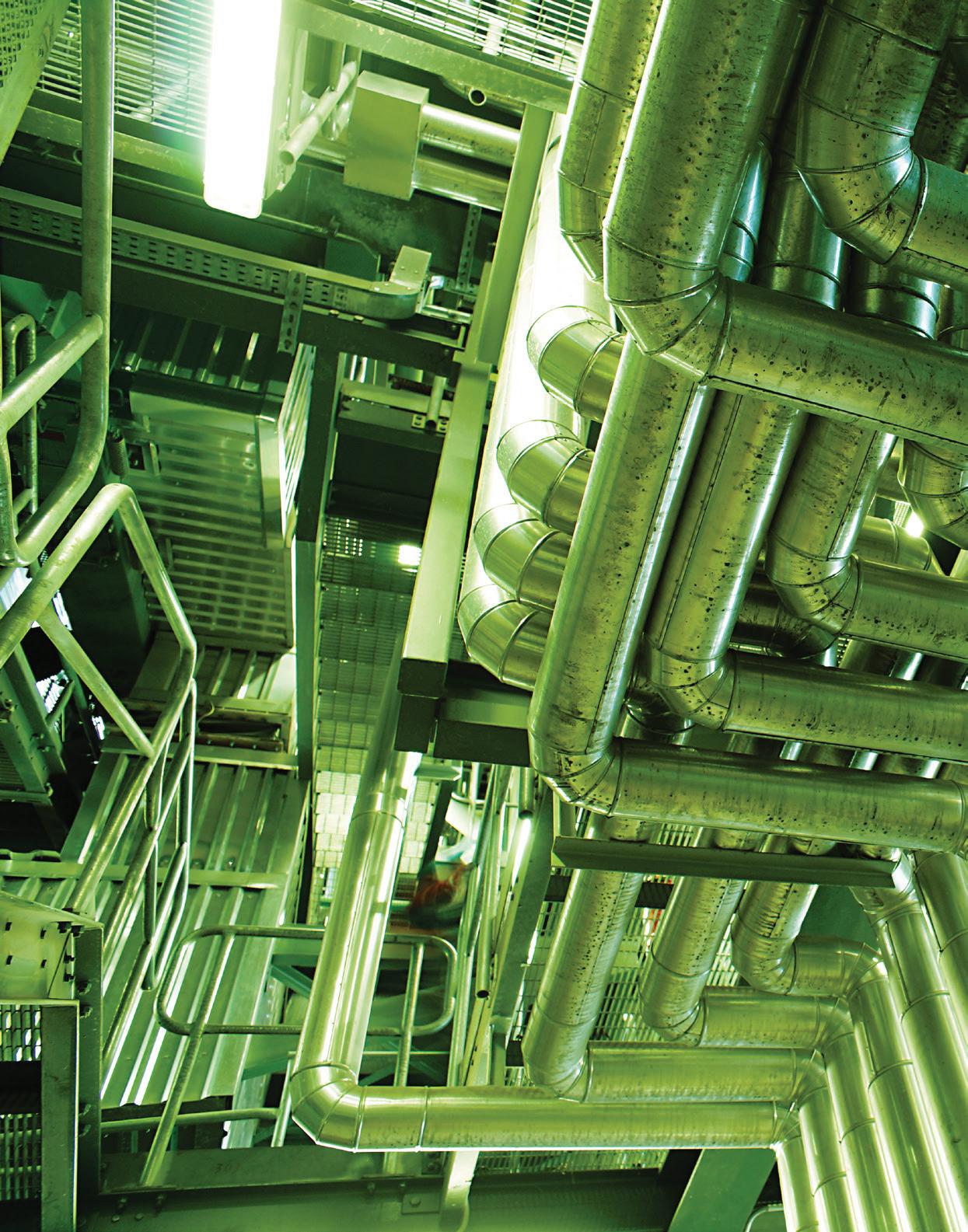
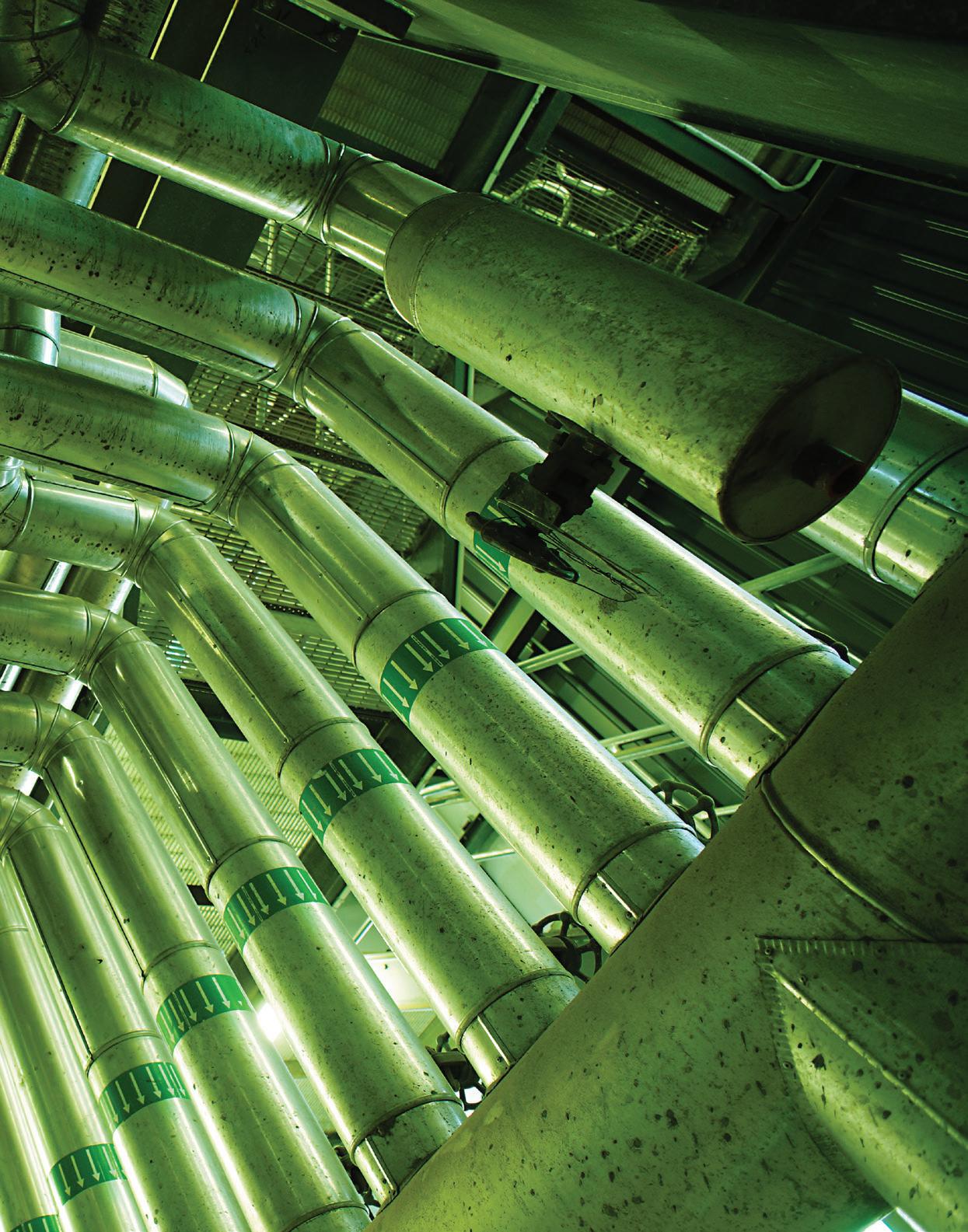
GOING GREEN: DECARBONISING THE GAS NETWORK
In March last year, the Australian Gas industry released Gas Vision 2050, a report which provides a conceptual outline of how Australia can achieve net-zero carbon emissions in the gas sector by 2050. In support of this vision, Australian Gas Infrastructure Group (AGIG) is building a small pilot hydrogen production plant in South Australia. We spoke with AGIG Chief Customer Officer, Andrew Staniford, about the pilot project and the future of green gas in Australia.

AGIG is a consortium of companies consisting of Dampier Bunbury Pipeline (DBP), Australian Gas Networks (AGN) and Multinet Gas.
AGIG own 33,764km of natural gas distribution networks and over 3,500km of transmission pipelines across Victoria, South Australia, Queensland, New South Wales, Western Australia and the Northern Territory.
AGIG Chief Customer Officer, Andrew Staniford, said AGIG is committed to being a leader in the decarbonisation of Australia’s energy supply, including gas, transport and electricity.
“We believe that decarbonisation of the existing gas networks is a key requirement to achieve the country's emission reduction targets in an efficient and cost-effective manner,” Mr Staniford said.
As a result, AGIG has started working on a pilot project involving a carbon-free hydrogen production plant to be installed at the South Australian depot in Kidman Park that utilises new technology to explore clean energy opportunities through injection of hydrogen, a green gas.
“AGIG is supporting the project to encourage further technology development with respect to hydrogen production technologies and to receive learnings from injecting the hydrogen into our network,” Mr Staniford said.
“Natural gas (or methane) has long been a part of Australia’s low carbon energy solution, providing safe and reliable energy to homes and businesses at only one-quarter-to-one-sixth the emissions of the same energy sourced from the electricity grid¹.
“We do however acknowledge that over the long term our networks will need to decarbonise in order to meet future emissions targets.”
Reducing emissions with decarbonised gas
The decarbonisation of gas supply has the potential to cost-effectively reduce carbon emissions and assist the Federal Government to achieve net-zero carbon emissions by 2050, in such a way that balances environmental outcomes and supports the ongoing energy affordability and reliability of supply for Australian energy consumers.
Mr Staniford said Australia can continue supplying low emission natural gas long into the future, but it needed to consider how to continue to lower emissions from pipeline gas if it wants to meet the nation’s emissions objectives.
Decarbonising gas through the likes of hydrogen and biogas is key in achieving this.
The alternative of electrifying the energy currently supplied by direct use gas and transport will increase the demand for electricity and will require significant and costly investment to increase the capacity of the electricity network infrastructure
“Full electrification of our energy supply will require significant investment and time to deliver, which we do not consider to be efficient or in the long-term interests of energy consumers in Australia,” Mr Staniford said.
“Gas is also very reliable relative to electricity (given our assets are underground, gas customers can expect one interruption every 40 years),” he said.
Decarbonised gas also has the potential to provide clean energy to other industries and be used for a range of applications.
“It can also assist to decarbonise Australia’s transport sector.
“Vehicle manufacturers (such as Hyundai and Toyota as well as others) have developed hydrogen fuel cell vehicles, and hydrogen fuel cell vehicles produce zero carbon emissions - the only output is water vapour.
“It provides a cost-effective method for achieving emissions reductions, balancing the outcomes of the energy trilemma.”
The process of electrolysis
AGIG’s pilot project will use excess energy generated by wind, solar and other renewables to convert water into hydrogen, which is then injected into the gas network to provide energy without carbon emissions. The process is referred to as power-to-gas.
Hydrogen has about one-third of the heating capacity of natural gas which means a full conversion to hydrogen would require alterations to gas appliances in the future. However, injecting smaller amounts of hydrogen into the system has no perceptible impact and can be done into existing networks.
“Electrolysers use an electric current to split water molecules into hydrogen (H2) and oxygen (O2), so electrolysis produces hydrogen with the only by-product being oxygen. This process does not generate any carbon emissions if powered by renewable energy (such as solar or wind electricity generation),” Mr Staniford said.
“Electrolyser facilities are already available in the market and deployed around the world at scale to support certain industrial processes.”
AGIG expects to inject green gas into its network by 2019.
Considering the consumers
Mr Staniford said decarbonising our gas supply will be a great outcome for Australian energy consumers, with potential to cost-effectively reduce emissions.
Using both the gas and electricity networks for decarbonising the energy sector capitalises on existing infrastructure so that new investment is minimised, which consequently provides the best outcome for consumers in the long term.
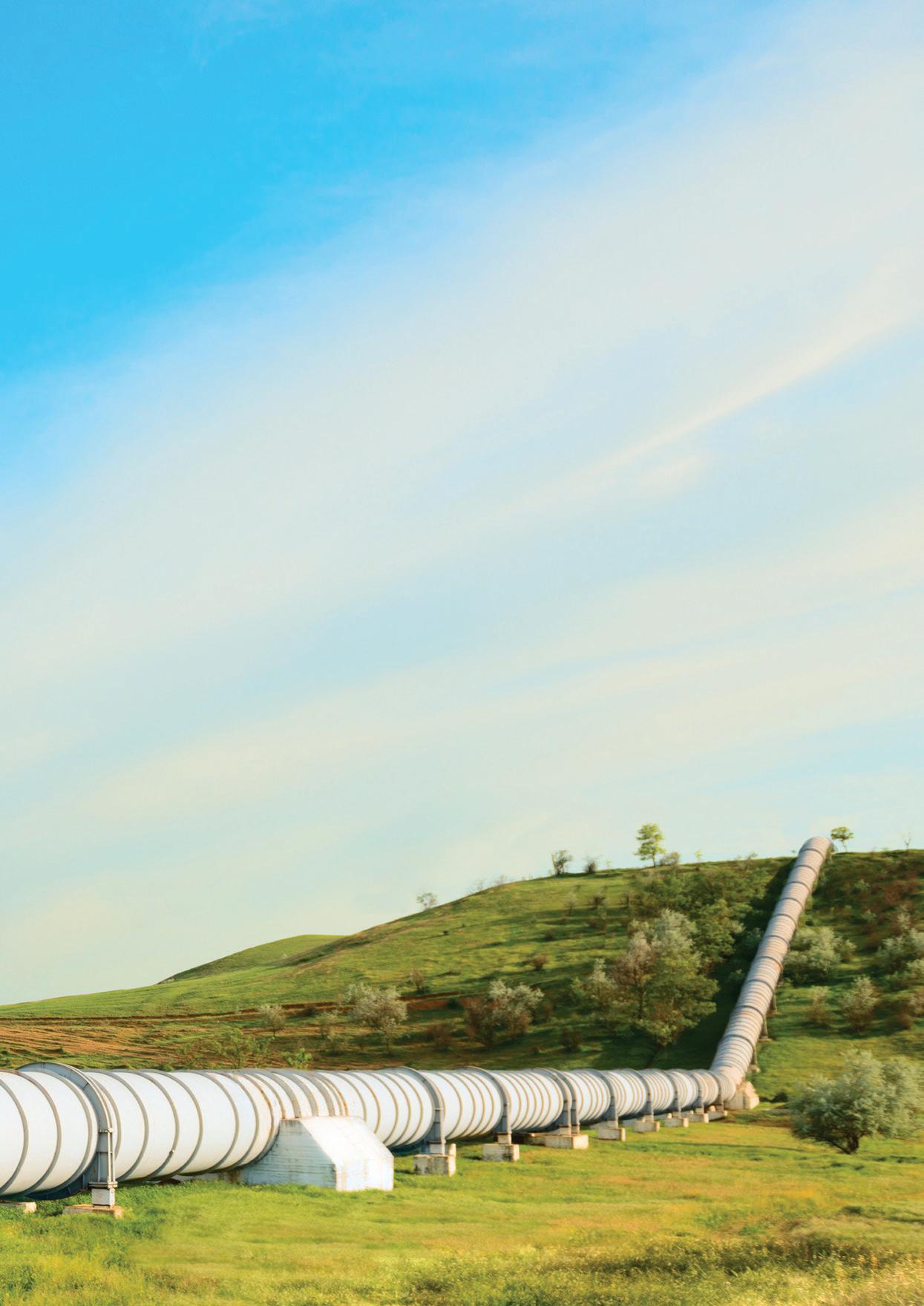
“Our current gas network infrastructure is suitable for transporting hydrogen with minimal additional investment required. Utilising current gas network infrastructure and decarbonising the gas transported through the infrastructure should ensure that emissions reductions are achieved at least at cost to Australian energy consumers,” Mr Staniford said.
Developing the green gas industry
While current gas network infrastructure is already suitable for transporting hydrogen with minimal investment required, the challenges lie in stimulating the development of a green gas industry within Australia.
Mr Staniford said some of the current challenges include:
» Unlike other countries, there are currently no dedicated hydrogen and/ or biogas facilities injecting carbon free gas into any network in Australia, and as such, we are at an early stage of delivery
» Reasonable investment is required, although costs are expected to be comparable to renewable electricity over the medium to longer terms
» There is currently no financial incentive and/or policy objective to facilitate injecting green gas (either hydrogen or biogas) into our network
In order to overcome these challenges AGIG is actively seeking opportunities to inject hydrogen (and biogas) into the network, which should encourage further development in hydrogen production technologies, which will continue to drive down costs.
“We are working with other organisations and government to develop other market opportunities for hydrogen, for example the conversion of vehicle fleets over
to hydrogen vehicles and the potential for electrolysers to provide grid stability services to electricity networks through system coupling,” Mr Staniford said.
Mr Staniford said for the industry to adopt a green gas approach to achieving net-zero emissions, the government will need to:
» Provide funding for hydrogen projects to assist with getting pilot/ demonstration/proof-of-concept projects off the ground, to stimulate development of the hydrogen economy in Australia
» Provide assistance to develop markets for hydrogen (for example, the recent SA Government initiative to convert six buses to hydrogen)
» Incentivise green gas to stimulate other industries such as bioenergy or biogas production
» Create appropriate policy to encourage further private investment and innovation, and green gas industries
What the future holds
There is a huge opportunity for green gas to provide zero carbon emission use in homes, business, industry, the transport sector, electricity generation and for exports, if funding and development is continued.
Mr Staniford said the development of a green gas industry will help Australia meet its emissions targets.
“The future for green gas in Australia is bright. We have vast natural resources (such as solar and wind) that we can use to produce zero-emission hydrogen, to be transported through gas networks around Australia for end use in homes and businesses,” Mr Staniford said.
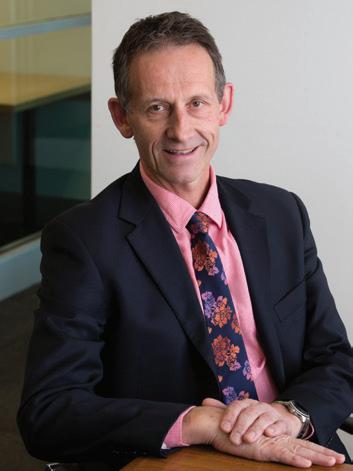
“We also have vast agricultural resources that can be harnessed to produce biogas (i.e. waste-to-energy), which can also be transported through gas networks around Australia."
“Australia has a real opportunity to become a world leader in this space, and potentially export hydrogen to other countries, creating a substantial new industry and jobs for Australians.”
AGIG believes decarbonisation of Australia’s gas industry by 2050 is an achievable goal and is in line with the Australian Government’s commitment to achieving net-zero carbon emissions by 2050.
“AGIG is excited about the opportunities we see within Australia and look forward to working collaboratively with industry and government to ensure a bright future for Australia’s gas industry in a low emission environment,” Mr Staniford said.
AGIG is currently working with industry to advocate for the introduction of green gas policy in order to encourage investment in low emission gas production technologies. Governments (at both state and federal level) are continuing to support the uptake of renewable or low emission electricity technologies (through feed-in-tariffs for residential rooftop solar output), and AGIG is looking to advocate for the introduction of a similar green gas incentive to support development of the green gas industry in Australia.

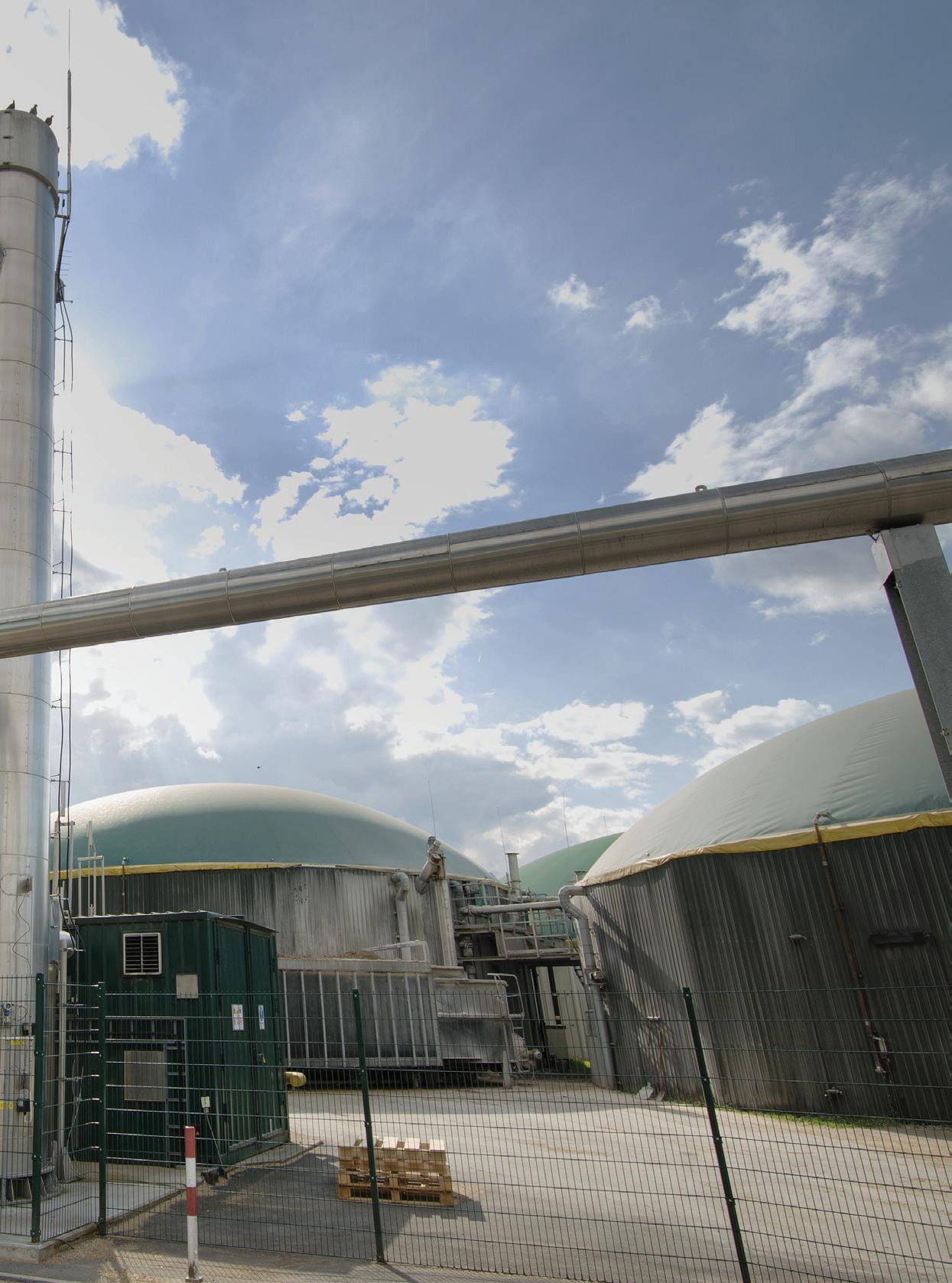
FUTURE FUELS FOR AUSTRALIA’S ENERGY SUPPLY MIX
In 2017, a partnership of over 50 companies, six universities, the energy market operator and two regulators applied for the Australian Government’s businessresearch collaborations funding as part of its Cooperative Research Centres Programme to establish the Future Fuels CRC.
The Future Fuels Cooperative Research Centre (CRC) will support Australia’s multi-billion dollar energy industry to transition to clean fuels for Australia’s electricity, transport, agriculture, mining, building and industrial sectors. The CRC will create the technology and skills to produce, store and deliver clean, reliable, secure and affordable future energy delivered through new and repurposed infrastructure.
Here, Chief Executive Officer of the Future Fuels CRC, David Norman, talks about the country’s energy transition and how the proposed CRC will help support a move towards decarbonised fuel.
The future of clean fuels not a pipe dream
Improving the long-term security of the gas and pipeline network will continue to be a major priority as Australia transitions to a low emission energy future.
Australia’s gas pipeline infrastructure currently serves five million homes and 130,000 businesses.
Mr Norman said Australia’s pipeline infrastructure already delivers a range of fuels and fluids, including natural gas, oil, LPG and condensates, as well as other chemicals and fluids, including carbon dioxide and water, but now research will also focus on new fuels.
“As part of the energy transition, the challenge is increasingly, how to progressively support decarbonisation efforts in the medium to longer term,” Mr Norman said.

Moving forward, the aim is for clean fuels, such as biogas and hydrogen, to be delivered through both new and repurposed infrastructure to meet the needs of the whole energy market –electricity, transport, agriculture, mining, building, industrial and residential sectors.
“The ongoing objective of all existing networks is to maintain the highest levels of safety and reliability, and these objectives would remain as we consider new blends and new types of fuels,” Mr Norman said.
A collaborative approach
The Future Fuels CRC has support from over 50 company members of the Australian Pipelines and Gas Association, Energy Networks Australia, six of Australia’s top universities and state regulators from South Australia and Victoria, and the Australian Energy Market Operator
Participating universities include RMIT University, Deakin University, University of Wollongong, University of Adelaide, University of Queensland and University of Melbourne.
“A unique coalition of partners has been created from industry, academia and regulatory representatives. This provides breadth and diversity across the broad value chain, from fuels generation through transportation and ultimately delivery to customers,” Mr Norman said.
The CRC will provide organisations with an opportunity to pool resources and relevant skills using proven models for collaboration to create new technologies to inform future infrastructure decisions.
It will also provide an opportunity to reduce the carbon intensity of energy consumed by Australian businesses, industry and households.
“Australia has incredible resources and potential available through stronger collaboration between researchers and industry. We are proud to be working through the CRC mechanism as a means to foster engagement, innovation and collaboration for the future benefit of all involved, not only in our industry, but across the broader community,” Mr Norman said.
Practical implementations
The Future Fuels CRC will undertake three research programs to support the implementation of future fuels, and build new technical and managerial capacity in the energy industry.
Mr Norman said, “The Future Fuels CRC research programs will focus on what are the potential fuels of the future in the energy supply mix, and how new and existing infrastructure can safely and reliably deliver on behalf of Australia’s residential, industrial and power customers.

“In addition, world-class research on security of supply, public safety and social acceptance associated with these transitions will be undertaken in support of these exciting developments.
“This research will also be supported by a comprehensive education and training program.”
The three research programs include:
1. Fuel technologies, systems and markets
This program will support the decarbonisation of networks through R&D support of industry led pilot projects; develop understanding and business cases for the introduction of future energy fluids such as hydrogen, biogas and syngas; and build advanced techno-economic and scenario models of energy systems, networks and markets.
The program will also help to develop novel materials for transport and storage of low-carbon energy fluids; accelerate the development of strategic, early-stage, breakthrough future fuel production technologies; and identify cost-effective low carbon solutions for supply to gas-reliant Australian manufacturing industries.
2. Social acceptance, public safety and security of supply
This research program aims to identify best practice policy solutions to support governance of successful adoption and management of future fuels and its related infrastructure, as well as develop innovative community engagement practices to unlock energy resources and promote transformational energy technologies.

It will also anticipate and address issues of social acceptance relating to energy transfer, and accelerate the use of innovative technology to inhibit third party interference to buried infrastructure, such as fibre optics, sensors and drones.
The last of its aims looks to develop new mobile interactive technologies for field workers in the energy sector to support better safety practices, as well as strengthening organisational accident prevention to sustain the world’s best practice safety and reliability performance of Australia’s gas infrastructure.
3. Network lifecycle management
The third research program will inform regulators in the development of Australian and International Standards for the transport and use of future fuels, and develop innovative technology for measuring and evaluating the performance of assets.
It also aims to build smart monitoring, data analytics and asset condition prediction tools that support the Internet of Things, and enhance asset management; research advanced composite repair and coating systems with self-healing capability; in addition to enhancing pipeline value by improving pipe material properties and predictive models. The network lifecycle management program will also extend the remaining safe economic working life of assets by novel testing techniques and repurpose assets.
The Future Fuels CRC is currently applying as part of the annual funding rounds which targets an initiation of the CRC in mid-late 2018. If successful, the Future Fuels CRC will operate for seven years and is a most promising avenue of research and industry-led collaboration for the Australian energy sector.

2018 MUST BE THE YEAR ENERGY POLICY IS DECIDED
by Andrew Richards, Chief Executive Officer, Energy Users Association of Australia


While energy and climate change policy has been a political contest for more than a decade, over the past 18 months solving the self-created crisis in our energy markets has been the topic de jour for a much broader audience. While it has been a “willing” discussion to date, it is just the warm up. Here, Energy Users Association of Australia CEO, Andrew Richards, outlines what energy users are looking for in 2018 and beyond.
In 2018, energy policy is set to be discussed at length and hopefully decided. This will require equal doses of luck, cooperation and rational policy design. Hopefully stakeholders recognise that the stakes are high and that the status quo will only lead to even greater economic destruction.
This new process will be managed by the Energy Security Board (ESB) which begins its consultation on the design of the National Energy Guarantee (NEG) in February as it seeks to determine key design aspects of the scheme.
It will be a pivotal year for all energy users as it could see an end to the energy policy rollercoaster, an improved
investment environment and an energy price trajectory that begins to trend downwards. And boy are they looking forward to that.
Even if you haven’t been paying close attention you would have noticed that energy prices have been skyrocketing in recent years with some businesses experiencing a trebling of their annual bill. The prospect of bipartisan energy policy has energy users feeling optimistic and hoping that the days of price volatility, energy security concerns and forever increasing energy contracts may be numbered.
Despite the NEG policy not being the first, second or even third policy choice for many, the impact of having an investment
grade policy in place that lasts beyond an election cycle is far better than no policy at all. This is why we have offered our conditional support.
The policy malaise we are now in, which is largely self-inflicted, is on the verge of creating major economic destruction. Many businesses are hurting with some seriously considering relocating productive capacity to countries that have a more stable energy environment, while many are looking for alternatives and ways to offset energy costs.
When the NEG policy consultations with the ESB begin, the Energy Users Association of Australia (EUAA) will be looking to ensure that the “long-term interests of consumers”, a key aspect
of the National Energy Objectives, are at the forefront of policy design. All too often energy users feel this key objective is only given lip service and that clearly needs to change.
After a decade of uncertainty and policy driven by ideology rather than science, technology and economics, we must recognise the days of ultra-cheap energy are gone. To deal with this we must re-adjust expectations and think differently about energy if we are to find a way forward.
Large energy users represent around 40 per cent of the energy used in Australia every day. These are the businesses that create, sell or distribute the essential goods and services that are used, or are
made into, everyday items that Australians purchase every day. Getting control of prices across this group has a direct financial benefit for all Australians.
There are a myriad of opportunities and we must investigate them all.
Increasingly we are seeing large energy consumers underwriting energy generation by signing Power Purchase Agreements and contracting energy directly. Others are increasingly accessing demand management opportunities, improving their knowledge of where they use energy and then improving energy productivity and energy efficiency, installing solar PV and batteries, or utilising bioenergy and trapping waste heat for energy.
Internationally, hydrogen fuel is
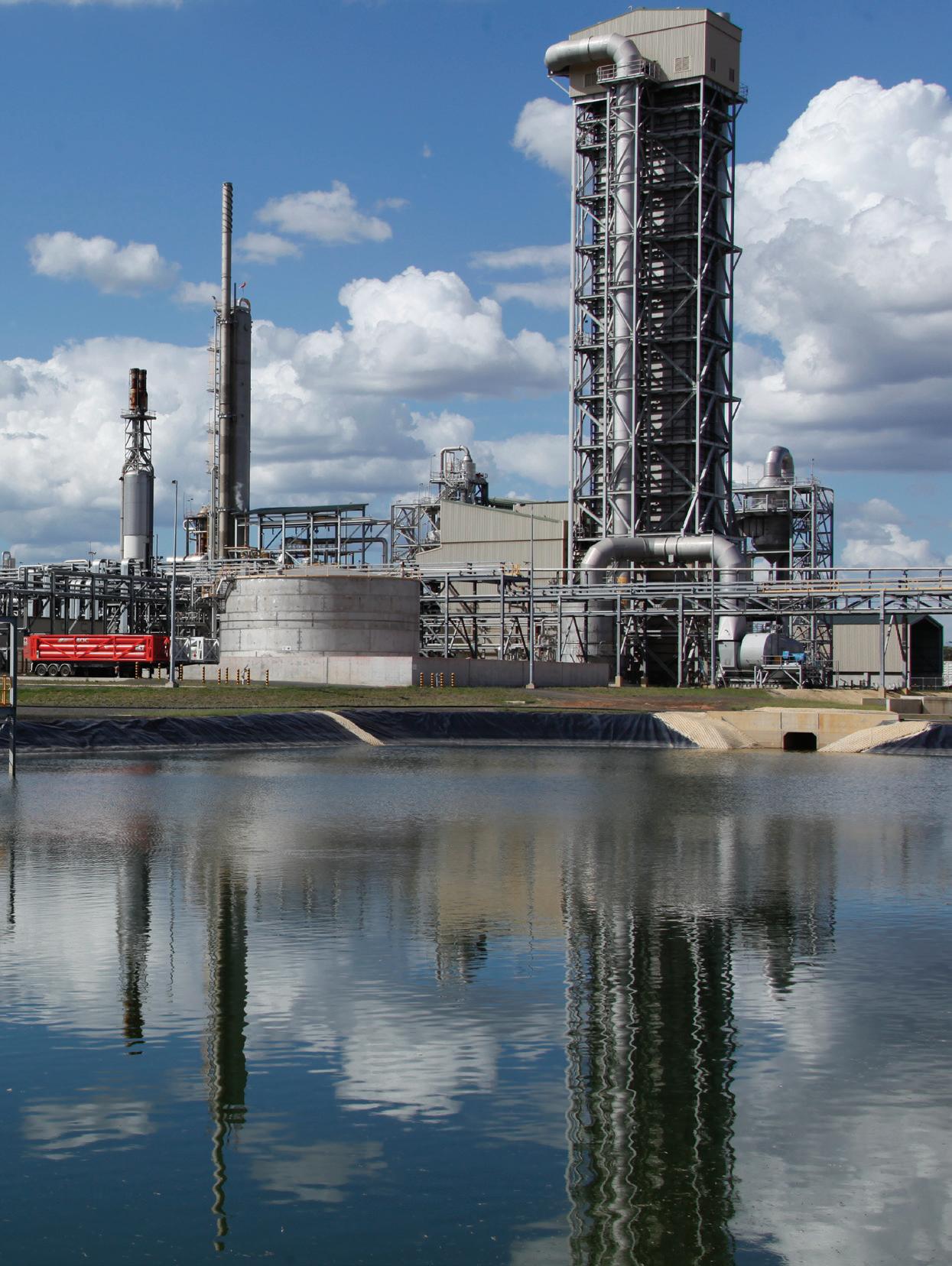
replacing gas as a transport fuel and a trial of hydrogen is about to get underway in Australia which will investigate the opportunity to substitute hydrogen for gas in our network. New energy contracting strategies are also being investigated.
Progress is impossible without change. Despite the transformation in our energy system still having some way to go along its bumpy journey, remaining focused on consumers will give us the best opportunity to create energy markets that generate reliable, sustainable and affordable energy. And that is good news for all energy users.
2018 will be a deciding year for energy policy in Australia. Get involved in the conversation, make sure you are being heard, or live with the consequences.
You can become a member of the Energy Users Association of Australia by visiting euaa.com.au.
EUAA is also running its National Conference: Future Thinking from 2-3 May, which will see large energy users and other energy market participants converge on Etihad Stadium. Tickets are available for members and non-members via the EUAA website.
THE PATHWAYS FORWARD FOR THE ENERGY SECTOR
 by Tony Wood, Energy Program Director, Grattan Institute
by Tony Wood, Energy Program Director, Grattan Institute
Most of us begin each new year hoping it will be better than the last. Australia’s energy sector is no different. And the good news is that this time, the optimism may be justified.



Last year, the mess that is Australian energy and climate policy became clear to all: governments, businesses and households. There were threats to electricity supply, the shutdown of major power plants without adequate replacement, further rises in electricity and gas prices, concerns about excessive profits for retailers, and neverending rancorous political debate over key reform proposals.
It took too long, but industry finally got the message that when it comes to energy, it can no longer assume an untrammeled right to just get on with business. And unfortunately, governments discovered that direct, reactive intervention is far easier and popular in the short term than development of credible, stable policies.
While energy market reform has generally served Australia well since the mid-1990s, that position gradually unravelled in the past decade. Today, the list of bad outcomes makes sober reading.
Issues in the sector
Regulation of network businesses has been problematic, and this is a big part of the electricity bill for households and small businesses; the asset values on privatisation have been questionably large, leading to prices that exceed real value; and the allowed rates of return for those businesses were much higher than is consistent with a regulated business that should see low returns in exchange for low risks.
We have had no effective, credible climate policy. Attempts such as Labor’s fixed-price Emissions Trading Scheme or the Coalition’s Direct Action policy have either been ill-conceived or inadequate. The policy environment on this issue has been more toxic than most. The result has been a sustained period of investment uncertainty when older generation plants have been shutting down – not good for reliability or prices.
Weaknesses have been growing in the market structures – again, not good for reliability or prices. Market reforms that began in the 1990s were never completed; historical over-investment led to complacency; government ownership was and remains problematic; and there has been increasing market concentration and poorly competitive markets in electricity generation and retail.
The gas market has become increasingly dysfunctional. Opening the closeted east coast domestic market was very badly handled; the pipeline capacity market and the wholesale gas trading markets need reform; and the inconsistency of the
national approach to regulation of gas development remains an embarrassment.
Governance of the energy sector needs to be overhauled. The recommendations of the 2015 Vertigan Review on this subject were mild, but even those have not yet been fully implemented. And the effectiveness of the recently constituted Energy Security Board has yet to be tested.
The supply problems of 2016–17, notably in South Australia but also in other states, ongoing high prices, and the need for integrated energy and climate policies led to a plethora of reviews and reports, most of which delivered recommendations in the second half of 2017. Taken together, they give hope; they may just provide a framework for focused action in 2018.
The framework to move forward
This framework has several major elements:
The Finkel Review is a blueprint for the National Electricity Market and it should be implemented. A planned transition to a low-emissions economy requires a long-term reduction trajectory and a policy such as a Clean Energy Target (CET) to get there; reliability issues that could emerge with increasing levels of intermittent supply need to be addressed via a generator reliability obligation, three-years’ notice of plant closure and maybe a strategic reserve; a new energy market agreement should be negotiated to reaffirm commitments to a truly national approach to energy policy; and planning should take a stronger role even as it complements the market.
The Energy Security Board has delivered its first assessment of the health of the National Electricity Market. The conclusion; it’s not very healthy. The Board also recommended a National Energy Guarantee to address the political difficulties with the CET and provide a more comprehensive approach to ensuring the future availability of dispatchable capability in an increasingly volatile wholesale market. If adopted, this approach would be a world leader in integrating energy and climate change policy.
The Australian Competition and Consumer Commission (ACCC) published reports on the gas and electricity markets that raised serious concerns about the way market flaws are pushing up consumer prices. On gas, the ACCC noted real but inadequate improvements. On electricity, it identified cost structures and market concentration as issues. Further reports will keep the spotlight on the flaws and the need for corrective actions.
The elimination of the Limited Merits Review for network regulation was a major

step forward, and additional resources were provided to the Australian Energy Regulator. The regulator and the industry seem to have finally responded to changing market conditions.
For its part, the Federal Government released its 2017 Review of Climate Change Policies just before year’s end. This review was underwhelming – it failed to provide a clear, compelling or comprehensive policy framework to meet Australia’s current and likely future emissions reduction targets. There were, however, three important features of substance.
First, the government committed to meeting Australia’s 2030 target without, it says, compromising growth or jobs. Second, a sector-based, rather than an economy-wide approach, continues to be the preferred way to meet the target. And third, the government reaffirmed its commitment to develop a long-term emissions reduction strategy by 2020, as called for by Finkel.
The good news for Prime Minister, Malcolm Turnbull, and Federal Energy Minister, Josh Frydenberg, is that these various reviews are telling a generally coherent story. Turnbull and Frydenberg’s task is to weave these threads into a consistent and compelling narrative on security, price and emissions. The bad news is they have nowhere to hide.
What should happen in 2018 (and why there are grounds for cautious optimism)
Australia is likely to ‘survive’ this summer without major shortages or blackouts. But more, much more, needs to be done.
Governments should back and implement the National Energy Guarantee, or something like it, to drive emissions reductions and maintain reliability. Achieving that outcome will require deft political management – a major test for the skills of Minister Frydenberg as chair of the COAG Energy Council.
A nationally consistent approach to regulation of gas development should be adopted; regulatory coverage of gas pipelines should be progressed; and a further effort should be made to deliver greater transparency of gas pricing. Gas availability should improve further, and prices should stabilise around the benchmark of export parity – but they will not return to the low levels of history.
The mid-2018 ACCC review of retail competition should clarify the problems of market concentration, but solutions will be hard to find and implement.
The transition to decentralised power generation and large-scale storage
demands a major review of transmission planning, including the role of renewable energy zones as recommended by the Finkel Review. Painful decisions should be taken to finally address the gnawing problem of historical over-investment in network assets.
Cost-reflective network tariffs must be introduced to deliver more efficient and fairer prices, despite the inevitable objections of narrow political or vested interests. Work should accelerate to ensure that ring-fencing and incentive structures for the network businesses drive efficient outcomes as technology and customer choices continue their rapid evolution.
The initial and positive responses from electricity retailers to Federal and State Government demands to improve customer outcomes will need to be followed through. The final ACCC report and the response of the Victorian Government to the Thwaites Review’s proposal for a partial reversion to price regulation will be key outcomes in 2018.
The Finkel blueprint should be implemented. But this will be a tricky task: points of disagreement will emerge, mostly where the objectives of individual state or territory governments clash with the commonwealth or national agenda.
Transition to a low-emissions system
Coordinated, focused and sustained action on these issues should finally put Australia on a path to a credible transition to a low-emissions energy sector as part of a low-emissions economy. Investments that ensure reliability should balance the increasing share of intermittent, zero-marginal-cost solar and wind power. And a shift back to more competitive and efficient markets and better regulation of monopolies should deliver lower prices.
No sector of Australia’s economy depends more heavily on cooperative federalism than energy. The physical, financial and legislative systems flow across state borders, and the core interests of governments and industry in delivering reliable and affordable energy are fundamentally the same.
Politics will be unavoidable in 2018. There will be several state elections, and possibly a federal one, where energy will be an issue. Recent history suggests parochial and partisan politics could fail us all once again.
Yet failure is not preordained. Political will and leadership across governments could finally give Australians what they deserve and need – a transition to a low-emissions energy system that is boringly reliable and pleasingly affordable.
SECURE A PLACE AT ENERGY NETWORKS 2018 – VISION CRITICAL
Energy Networks 2018 Conference and Exhibition is shaping up to once again be the pre-eminent event for the energy industry in Australia. With a stellar line-up of national and international speakers already confirmed, Energy Networks 2018 – Vision Critical is the must attend event for all participants in the energy supply sector.
Conference program
As the only conference and exhibition in the market developed by the industry for the industry, Energy Networks 2018 participants will have unrivalled access to the leaders and experts in the sector.
The Energy Networks 2018 concurrent program will feature over 70 national and international experts discussing key issues for the energy system. Confirmed concurrent program speakers come from energy network businesses, leading service and technology providers, and researchers including ARENA, Accenture, EA Technology, Jemena, Monash University, The Australian National University, ARUP, Powerco and the EPECentre at the University of Canterbury.
Hear from international leaders in innovation and consumer engagement
Australian and international industry leaders in innovation, technology, customer engagement and service delivery will feature at Energy Networks 2018
Susan Kennedy is the Founder and CEO of Advanced Microgrid Solutions, based in the US. Susan served for two decades at the highest levels of state

Susan Kennedy, Founder and CEO of Advanced Microgrid Solutions.
and federal government, most recently as Chief of Staff to Governor Arnold Schwarzenegger, Cabinet Secretary and Deputy Chief of Staff to Governor Gray Davis and Communications Director for US Senator Dianne Feinstein. She served from 2003-2006 on California’s Public Utilities Commission.
Peter Peacock is Chair of the Customer Forum for Water in Scotland. In his second term as Chair, Peter is active in the second regulatory price review. Peter has a background spanning the public, private and third sectors. He retired from a 30 year political career in 2011, having served as a Member of the Scottish Parliament, and a Scottish Cabinet Minister.
The Energy Networks 2018 plenary sessions will also feature leaders from across the energy supply chain, including:
» Nino Ficca, Managing Director and CEO, AusNet Services
» Rosemary Sinclair, CEO, Energy Consumers Australia
» Dr Phil Blythe, Founder and CEO, Greensync
» Guy Chalkley, CEO, Western Power
» Ben Wilson, CEO, Australian Gas Infrastructure Group
» Richard Gross, CEO, Ausgrid
» Paul Italiano, CEO, Transgrid
» Philip Hirschhorn, Partner & Managing Director, Boston Consulting Group
» Blanca Losada, Chief Technology Officer, Gas Natural Fenosa
» Tim Weidenbach, Senior Vice President, Customer Operations, Landis+Gyr North America
» David Smales, CEO, Energy Queensland
Secure your preferred exhibition spot today!
As a key participant in the energy transformation, we invite you to consider the remaining exhibition opportunities available to position your organisation alongside this leading industry forum. Places are limited so book now to avoid disappointment.
Registrations are now open, with early bird discounts available today until 15 March 2018. Substantial savings are also available for group bookings made by a company in a single transaction.
For more information, please go to the Energy Networks 2018 Conference + Exhibition website - www.energynetworks2018.com.au
Don’t miss out on your chance to be a part of the only national Conference + Exhibition focused on the energy network sector organised by the industry for the industry and its supply chain partners.
This is a prime opportunity for you to take your place in the transformation of the energy system. www.energynetworks2018.com.au @EnergyNetwork18












STORING ENERGY FOR A SUSTAINABLE FUTURE


Join us in Adelaide, the heart of the energy storage revolution! With the theme “Storing Energy for a Sustainable Future”, the event will explore the huge potential of emerging energy storage. The conference will feature leading industry speakers, present real and financially viable case studies for utility, commercial, off grid and residential applications, and include a keynote presentation from Chairman of GFG Alliance and majority shareholder of SIMEC Zen Energy, Savjeev Gupta.
The free-to-attend exhibition will feature leading brands such as Tesla, Redflow, Toshiba, Kokam and ANT Solutions, all displaying innovative smart storage solutions taking place in Australia.
Exclusive site tours are also available to all conference delegates, taking place at selected commercial and utility energy storage companies. Talk directly with site owners and technology providers, and get an in depth insight into innovative technology and installation on site.









PROJECT PERFORMER

SPEED. PRECISION.
LOCAL PRODUCT SUPPORT.
THE VERMEER PD10
SOLAR PILE DRIVER IS YOUR SPRINGBOARD INTO LARGE SCALE SOLAR.
[ Speed ] Designed from the ground up for solar array installation, the PD10 brings cycle times down to unprecedented lows.
[ Precision ] Laser or optional GPS guidance and an innovative hammer design means outstanding accuracy, less pile damage—and less rework.
[ Local product support ] Get your project underway with the peace of mind that only the backing of a truly nationwide dealer support network can offer.
Contact your local Vermeer product specialist to learn more.

PD10 SOLAR PILE DRIVER. GET EQUIPPED.
